
How To Write an Analytical Essay

If you enjoy exploring topics deeply and thinking creatively, analytical essays could be perfect for you. They involve thorough analysis and clever writing techniques to gain fresh perspectives and deepen your understanding of the subject. In this article, our expert research paper writer will explain what an analytical essay is, how to structure it effectively and provide practical examples. This guide covers all the essentials for your writing success!
What Is an Analytical Essay
An analytical essay involves analyzing something, such as a book, movie, or idea. It relies on evidence from the text to logically support arguments, avoiding emotional appeals or personal stories. Unlike persuasive essays, which argue for a specific viewpoint, a good analytical essay explores all aspects of the topic, considering different perspectives, dissecting arguments, and evaluating evidence carefully. Ultimately, you'll need to present your own stance based on your analysis, synthesize findings, and decide whether you agree with the conclusions or have your own interpretation.
Wondering How to Impress Your Professor with Your Essay?
Let our writers craft you a winning essay, no matter the subject, field, type, or length!
How to Structure an Analytical Essay
Crafting an excellent paper starts with clear organization and structuring of arguments. An analytical essay structure follows a simple outline: introduction, body, and conclusion.
Introduction: Begin by grabbing the reader's attention and stating the topic clearly. Provide background information, state the purpose of the paper, and hint at the arguments you'll make. The opening sentence should be engaging, such as a surprising fact or a thought-provoking question. Then, present your thesis, summarizing your stance in the essay.
Body Paragraphs: Each paragraph starts with a clear topic sentence guiding the reader and presents evidence supporting the thesis. Focus on one issue per paragraph and briefly restate the main point at the end to transition smoothly to the next one. This ensures clarity and coherence in your argument.
Conclusion: Restate the thesis, summarize key points from the body paragraphs, and offer insights on the significance of the analysis. Provide your thoughts on the topic's importance and how your analysis contributes to it, leaving a lasting impression on the reader.
Meanwhile, you might also be interested in how to write a reflection paper , so check out the article for more information!
How to Write an Analytical Essay in 6 Simple Steps
Once you've got a handle on the structure, you can make writing easier by following some steps. Preparing ahead of time can make the process smoother and improve your essay's flow. Here are some helpful tips from our experts. And if you need it, you can always request our experts to write my essay for me , and we'll handle it promptly.
.webp)
Step 1: Decide on Your Stance
Before diving into writing, it's crucial to establish your stance on the topic. Let's say you're going to write an analytical essay example about the benefits and drawbacks of remote work. Before you start writing, you need to decide what your opinion or viewpoint is on this topic.
- Do you think remote work offers flexibility and improved work-life balance for employees?
- Or maybe you believe it can lead to feelings of isolation and decreased productivity?
Once you've determined your stance on remote work, it's essential to consider the evidence and arguments supporting your position. Are there statistics or studies that back up your viewpoint? For example, if you believe remote work improves productivity, you might cite research showing increased output among remote workers. On the other hand, if you think it leads to isolation, you could reference surveys or testimonials highlighting the challenges of remote collaboration. Your opinion will shape how you write your essay, so take some time to think about what you believe about remote work before you start writing.
Step 2: Write Your Thesis Statement
Once you've figured out what you think about the topic, it's time to write your thesis statement. This statement is like the main idea or argument of your essay.
If you believe that remote work offers significant benefits, your thesis statement might be: 'Remote work presents an opportunity for increased flexibility and work-life balance, benefiting employees and employers alike in today's interconnected world.'
Alternatively, if you believe that remote work has notable drawbacks, your thesis statement might be: 'While remote work offers flexibility, it can also lead to feelings of isolation and challenges in collaboration, necessitating a balanced approach to its implementation.'
Your thesis statement guides the rest of your analytical essay, so make sure it clearly expresses your viewpoint on the benefits and drawbacks of remote work.
Step 3: Write Topic Sentences
After you have your thesis statement about the benefits and drawbacks of remote work, you need to come up with topic sentences for each paragraph while writing an analytical essay. These sentences introduce the main point of each paragraph and help to structure your essay.
Let's say your first paragraph is about the benefits of remote work. Your topic sentence might be: 'Remote work offers employees increased flexibility and autonomy, enabling them to better manage their work-life balance.'
For the next paragraph discussing the drawbacks of remote work, your topic sentence could be: 'However, remote work can also lead to feelings of isolation and difficulties in communication and collaboration with colleagues.'
And for the paragraph about potential solutions to the challenges of remote work, your topic sentence might be: 'To mitigate the drawbacks of remote work, companies can implement strategies such as regular check-ins, virtual team-building activities, and flexible work arrangements.'
Each topic sentence should relate back to your thesis statement about the benefits and drawbacks of remote work and provide a clear focus for the paragraph that follows.
Step 4: Create an Outline
Now that you have your thesis statement and topic sentences, it's time to create an analytical essay outline to ensure your essay flows logically. Here's an outline prepared by our analytical essay writer based on the example of discussing the benefits and drawbacks of remote work:
Step 5: Write Your First Draft
Now that you have your outline, it's time to start writing your first draft. Begin by expanding upon each point in your outline, making sure to connect your ideas smoothly and logically. Don't worry too much about perfection at this stage; the goal is to get your ideas down on paper. You can always revise and polish your draft later.
As you write, keep referring back to your thesis statement to ensure that your arguments align with your main argument. Additionally, make sure each paragraph flows naturally into the next, maintaining coherence throughout your essay.
Once you've completed your first draft, take a break and then come back to review and revise it. Look for areas where you can strengthen your arguments, clarify your points, and improve the overall structure and flow of your essay.
Remember, writing is a process, and it's okay to go through multiple drafts before you're satisfied with the final result. Take your time and be patient with yourself as you work towards creating a well-crafted essay on the benefits and drawbacks of remote work.
Step 6: Revise and Proofread
Once you've completed your first draft, it's essential to revise and proofread your essay to ensure clarity, coherence, and correctness. Here's how to approach this step:
- Check if your ideas make sense and if they support your main point.
- Make sure your writing style stays the same and your format follows the rules.
- Double-check your facts and make sure you've covered everything important.
- Cut out any extra words and make your sentences clear and short.
- Look for mistakes in spelling and grammar.
- Ask someone to read your essay and give you feedback.
What is the Purpose of an Analytical Essay?
Analytical essays aim to analyze texts or topics, presenting a clear argument. They deepen understanding by evaluating evidence and uncovering underlying meanings. These essays promote critical thinking, challenging readers to consider different viewpoints.
They're also great for improving critical thinking skills. By breaking down complex ideas and presenting them clearly, they encourage readers to think for themselves and reach their own conclusions.
This type of essay also adds to academic discussions by offering fresh insights. By analyzing existing research and literature, they bring new perspectives or shine a light on overlooked parts of a topic. This keeps academic conversations lively and encourages more exploration in the field.
Analytical Essay Examples
Check out our essay samples to see theory in action. Crafted by our dissertation services , they show how analytical thinking applies to real situations, helping you understand concepts better.
With our tips on how to write an analytical essay, you're ready to boost your writing skills and craft essays that captivate your audience. With practice, you'll become a pro at analytical writing, ready to tackle any topic with confidence. And, if you need help to buy essay online , just drop us a line saying ' do my homework for me ' and we'll jump right in!
Do Analytical Essays Tend to Intimidate You?
Give us your assignment to uncover a deeper understanding of your chosen analytical essay topic!
How to Write an Analytical Essay?
What is an analytical essay.

Daniel Parker
is a seasoned educational writer focusing on scholarship guidance, research papers, and various forms of academic essays including reflective and narrative essays. His expertise also extends to detailed case studies. A scholar with a background in English Literature and Education, Daniel’s work on EssayPro blog aims to support students in achieving academic excellence and securing scholarships. His hobbies include reading classic literature and participating in academic forums.

is an expert in nursing and healthcare, with a strong background in history, law, and literature. Holding advanced degrees in nursing and public health, his analytical approach and comprehensive knowledge help students navigate complex topics. On EssayPro blog, Adam provides insightful articles on everything from historical analysis to the intricacies of healthcare policies. In his downtime, he enjoys historical documentaries and volunteering at local clinics.
Related Articles
%20(3).webp)
The Ultimate Guide to Analytical Essay Writing: How to Craft an A-Grade Paper?
25 January, 2021
17 minutes read
Author: Kate Smith
An analytical essay is often considered the most challenging piece of writing. However, those who have dealt with it at least once are a step closer to calling themselves masters of essay writing. This type of paper requires plenty of analytical skills to carry out an in-depth analysis of the assigned topic. Yet, the main goal of an analytical essay is not only to demonstrate your ability to learn the basics of the theme.

You also need to think critically, analyze facts, express your standpoint, and clearly show a deep understanding of key concepts. In short, your main task as an author is to prove the validity of your views by coming up with strong arguments that do not beg any questions.

The given guide provides a full analytical essay definition, as well as specifies its features and structural aspects. The following information will help you properly start your paper, choose a relevant topic, and come up with compelling conclusions.
What is an Analytical Essay?
An analytical essay is a piece of writing aimed to provide a thorough analysis of a definite phenomenon using persuasive arguments and supporting assertions. Analysis in the analytical essay writing process stands for a method of research that allows one to study specific features of an object. Analytical papers also have to do with analysis of a specific problem; that is consideration of the problem itself and identification of its key patterns. The subject matter of analysis can be a well-known or little-studied scientific phenomenon, artistic work, historical event, social problem, etc.
The content of an analytical essay will totally depend on the object that has been chosen for analysis. Thus, when shedding light on any kind of scientific work, an analytical essay can be devoted to the analysis of research credibility, its relevance, or the adequacy of conclusions. When considering a work of art, an essay writer can focus on the analysis of the author’s artistic techniques or issues raised in the book. For this reason, it is essential to accurately determine the topic and subject matter of your future analytical essay.
Steps to Take Before Writing
The preparational stage of analytical essay writing cannot be omitted. It lays the basis for the A-grade paper and should be carefully completed. If you don’t know how to start an analytical essay, read a few handy tips that will ensure a solid foundation for your paper.
Define a subject matter
You first need to clearly understand the issue you will base your essay on. Since analytical essays imply an in-depth analysis of a specific problem, you need to define its core. Try to split the analysis into several components and provide arguments taken either from a book, a research, a scientific work, or a movie (depending on the subject matter of your analysis), and support your views comprehensively.
Decide on the content of your analytical essay
If you are a student who was given an analytical essay topic, read the task several times before you are 100% sure that you clearly understand the requirements as to the analytical essay format. In case you were lucky to choose the topic of the analytical paper by yourself, make sure the theme you will be dealing with is familiar or at least seems interesting to you.
Remember that different subject matters require a different approach to their analysis. If you examine some literature work, you can prove your opinion based on the deeds of a certain or several characters. But if you have been assigned the task to elaborate on some historic events, analyze their main causes, driving forces that have affected their course, and their global consequences.
Take care of the proper start
Don’t forget to start your analytical essay with a thesis statement. It is a sentence or a couple of sentences that aim to summarize the key statements of your paper. A thesis statement should provide readers with a preliminary idea of what your essay is all about.
Find extra reasoning
Make sure your thesis is supported by compelling arguments. To find enough evidence, you should carry out a thorough analysis of the assigned topic. List the crucial points of your research and ponder over the ways they can be used to prove your final opinion.
Elaborate the outline
A sound outline elaborated at the preparation stage will help you ensure a proper analytical essay structure and make the overall writing process easier. As a rule, an analytical essay consists of an introduction, three body paragraphs, and a conclusion. Your outline plan should include the key arguments you want to discuss in each paragraph.
Analytical Essay Thesis
A thesis statement represents the central idea of your paper and must serve as strong proof of your standpoint. While elaborating your thesis statement, it is crucial to include it at the end of the first paragraph and thus set a direction for the overall paper.
Analytical Essay Outline
An outline is not a required element of analytical essays writing and should not be included in the text, but it can greatly facilitate the whole process of paper writing.
The analytical essay structure looks as follows:
Introduction
In the introduction of an analytical essay, you will need to identify your paper’s subject matter. Mention the purpose of your work and specify its scope of research. Don’t forget to include a thesis to let readers know what your work is about.
Body Section
As has already been mentioned, the body section covers three or more main paragraphs, each being supported with arguments and details. Besides, you need to provide a small conclusion to each statement to make your essay sound professional and persuasive.
At this stage, you need to summarize the points elucidated in your paper and make sure there is a smooth and logical transition from the body section to the concluding part of the text. If you don’t know how to conclude an analytical essay, try to restate the thesis statement without copying it word for word.
Analytical Essay Examples
Writing an analytical essay may seem to be a thorny way. If you are still not sure how to properly craft one, try to find some examples that will help you go in the right direction. Below, there are some great examples of analytical essays. Take a look at their structure and try to write something similar based on your views and ideas:
https://drive.google.com/file/d/1JeR4i4RIZIj448W3KVFyHP-eS3QPN7gW/view
https://stlcc.edu/docs/student-support/academic-support/college-writing-center/rhetorical-analysis-sample-essay.pdf
https://www.germanna.eduhttp://handmadewriting.com/wp-content/uploads/tutoring/handouts/Literary-Analysis-Sample-Paper.pdf
30 Analytical Essay Topics
If you were allowed to choose the theme for your paper by yourself, check on the following analytical essay topics. Each of them can bring you the highest score:
General topics
- The influence of social networks on the life of teens
- Are salaries of football players too high?
- Wearing uniforms in schools should be banned
- A person in society: the problems of loneliness and privacy
- Sociology of corporate relationships
- Does the observation of space need more investments?
- Should the voting age in the UK be decreased?
- Reasons why capital punishment should be brought back in the UK
- A world with no rules: a new human era or a road to the global collapse?
- Life without technologies: will modern people survive?
- Should scientists test drugs on animals to fight cancer?
- The problem of keeping the balance between career and family life
- The importance of listening to your body
- Problems caused by the lack of communication
- Food addiction and the problems it causes
- Problems of vaccination in the XXI century
- Does evil really rule the world?
- How does body size affect life quality?
- Pros and cons of video games
- The role of a family model in the life and career of a person
Analytical Essay Topics on Literature
- “Robinson Crusoe”: fantasy vs reality
- Observation of the artistic uniqueness in the comedy by W. Shakespeare “A Midsummer Night’s Dream”
- Observe the social problems in the novel by John Steinbeck “The Grapes of Wrath”
- Convulsions and death of the “little man” in the networks of impersonal, alienated forces in the novel “The Metamorphosis”
- Observation of the problems of a man on a plagued land in the novel “The Plague”
- Revolt of the protagonist in the novel by J. Salinger “The Catcher in the Rye”
- Observation of friendship and love in the fate of humanity in the XX century
- The triumph of immorality in the novel by F. Sagan “Hello Sadness”
- Observation of the personality of an American student in the novel by J. Salinger “The Catcher in the Rye”
- Eternal tragedies of humanity in the tragedy by W. Shakespeare “The Tragedy of Hamlet, Prince of Denmark”
How to Write a Well-Structured Analytical Essay With a Solid Argument
Writing an analytical essay with a clear structure might be challenging unless you are thoroughly prepared. We decided to help you out and create a detailed guide listing the main things to consider when creating an analytical essay outline. You need to explain your main idea in a concise way to bring your point across. As analytical writing has high requirements, it pays off to find an analytical essay example and analyze how this text was written. It will allow you to understand the analytical essay format better and learn how to provide substantive analysis on various topics. Read on to learn how to write a top-level analytical paper and submit it on time.
Main Tips for Writing an Analytical Essay
An analytical essay should provide a comprehensive analysis of a chosen topic. What makes an analysis essay different from other assignments is that it includes a personal opinion of an author. This is why analytical writing should be persuasive.
Below, we have rounded up the key tips you need to follow when producing an analytical essay outline and the main body of your text. Read on to learn more about the analytical essay format and create a text that will fully meet the requirements.
Select an Analytical Essay Topic
Before creating an analytical essay outline, make sure to pick a topic that you are interested in. It should be provocative enough to engage your readers. A widely-debated topic will help you write an analytical essay that grabs the attention of a wide audience.
Consider your goals and conduct thorough research to see if you have enough sources to support the main thesis of your analysis essay.
Come Up With a Strong Analytical Thesis Statement
When writing an analytical essay, start by formulating a thesis statement that includes the topic and the main goal of your text. It will help you create an analytical essay outline and show your readers what you will discuss in your analysis essay.
Add it to the last paragraph of your analytical essay introduction. Due to this, your analytical essay outline will look better structured. Look at any analytical essay example to see how you can introduce your subject. In most cases, one sentence will suffice to state your analysis essay’s goal. However, a complex analytical essay outline might require you to use two sentences for a thesis statement.
Write an Analytical Essay Body with a Clear Structure
Your analytical essay outline should include 3-4 paragraphs. However, a literary analysis essay usually consists of 5 paragraphs. When it comes to analytical writing, it is important to cover a different point in each section of the main body of an analysis paper.
After writing an analytical essay, check whether each paragraph contains an introduction and the main point. Besides, it should contain evidence. An expertly written analytical essay outline will help you reach out to your target audience more effectively.
Conduct Research Before Writing an Analytical Essay Outline
While this step is preparatory, it is a must for those who want to write a well-grounded analytical paper.
- First, select the best ideas for your essay
- Then, emphasize the problems with works written by other researchers
- Finally, write your analytical essay outline to demonstrate what approach you want to take
Examine the context and find examples to illustrate the scope of the issue. You may draw parallels to emphasize your point and make your topic more relatable.
Analyze the Implications of the Evidence
After listing your pieces of evidence and demonstrating how it is related to your thesis, show why it is important. You need to explore it deeply and use it to support your argument. It will make your analytical essay outline well-grounded facts.
Write an Analytical Essay Conclusion
Whether you write a literary analysis essay or other types of assignments, there is no need to add any new data at the end of your analysis paper. Instead, summarize the arguments you mentioned in your analytical essay outline. The conclusion of your analysis essay should be short and clear. Here, you need to demonstrate that you have achieved your goals.
Analytical Essay Writing Tips
If you want to get the highest grade for your analytical essay, you need to know a little bit more than just the basics of paper writing. Read these handy tips to write a perfect essay you will be proud of:
- Double-check your paper for spelling and grammar mistakes. In case your essay contains too many errors, neither an in-depth analysis nor the elaborate writing style will make it look any better. Situations when essays of great value in terms of research and a message they convey are poorly assessed because of the abundance of mistakes are not rare. Make sure you have enough time to proofread your paper before submission. Also, you may consider asking somebody to take a fresh look at your essay and check it for you.
- Reading your analytical essay out loud helps you discover all types of errors or weak phrases. This method might seem a bit uncomfortable, but it has proved to be very effective for many students. Note that silent reading of your paper isn’t even half as helpful as reading it aloud.
- Another great idea to check on the rhythm and flow of your paper is to ask someone to read it for you. While listening to the text, you could perceive it from another perspective and discover even more inconsistencies and mistakes.
- Double-check the facts you use in your analytical essay. The names of people, books, research, publications, as well as dates of historical events are too important to be misspelled. Things like these show your professionalism and the way you treat your readers.
Write an Analytical Essay with HandmadeWriting
Writing an analytical essay requires time, strong writing skills, great attention to detail, and a huge interest in the assigned topic. However, life can be unpredictable sometimes, and students might find themselves at risk of failing their creative assignments. Stress, family issues, poor health, and even unwillingness to work on a certain topic may become significant obstacles on their way to the A-grade work.
If you have similar problems, there is no need to compromise your reputation and grades. You can always refer to HandmadeWriting professionals who are ready to help you with a paper of any type and complexity. They will understand your individual style and totally devote themselv

A life lesson in Romeo and Juliet taught by death
Due to human nature, we draw conclusions only when life gives us a lesson since the experience of others is not so effective and powerful. Therefore, when analyzing and sorting out common problems we face, we may trace a parallel with well-known book characters or real historical figures. Moreover, we often compare our situations with […]

Ethical Research Paper Topics
Writing a research paper on ethics is not an easy task, especially if you do not possess excellent writing skills and do not like to contemplate controversial questions. But an ethics course is obligatory in all higher education institutions, and students have to look for a way out and be creative. When you find an […]

Art Research Paper Topics
Students obtaining degrees in fine art and art & design programs most commonly need to write a paper on art topics. However, this subject is becoming more popular in educational institutions for expanding students’ horizons. Thus, both groups of receivers of education: those who are into arts and those who only get acquainted with art […]

Choose Your Test
Sat / act prep online guides and tips, 5 steps to write a great analytical essay.
General Education

Do you need to write an analytical essay for school? What sets this kind of essay apart from other types, and what must you include when you write your own analytical essay? In this guide, we break down the process of writing an analytical essay by explaining the key factors your essay needs to have, providing you with an outline to help you structure your essay, and analyzing a complete analytical essay example so you can see what a finished essay looks like.
What Is an Analytical Essay?
Before you begin writing an analytical essay, you must know what this type of essay is and what it includes. Analytical essays analyze something, often (but not always) a piece of writing or a film.
An analytical essay is more than just a synopsis of the issue though; in this type of essay you need to go beyond surface-level analysis and look at what the key arguments/points of this issue are and why. If you’re writing an analytical essay about a piece of writing, you’ll look into how the text was written and why the author chose to write it that way. Instead of summarizing, an analytical essay typically takes a narrower focus and looks at areas such as major themes in the work, how the author constructed and supported their argument, how the essay used literary devices to enhance its messages, etc.
While you certainly want people to agree with what you’ve written, unlike with persuasive and argumentative essays, your main purpose when writing an analytical essay isn’t to try to convert readers to your side of the issue. Therefore, you won’t be using strong persuasive language like you would in those essay types. Rather, your goal is to have enough analysis and examples that the strength of your argument is clear to readers.
Besides typical essay components like an introduction and conclusion, a good analytical essay will include:
- A thesis that states your main argument
- Analysis that relates back to your thesis and supports it
- Examples to support your analysis and allow a more in-depth look at the issue
In the rest of this article, we’ll explain how to include each of these in your analytical essay.
How to Structure Your Analytical Essay
Analytical essays are structured similarly to many other essays you’ve written, with an introduction (including a thesis), several body paragraphs, and a conclusion. Below is an outline you can follow when structuring your essay, and in the next section we go into more detail on how to write an analytical essay.
Introduction
Your introduction will begin with some sort of attention-grabbing sentence to get your audience interested, then you’ll give a few sentences setting up the topic so that readers have some context, and you’ll end with your thesis statement. Your introduction will include:
- Brief background information explaining the issue/text
- Your thesis
Body Paragraphs
Your analytical essay will typically have three or four body paragraphs, each covering a different point of analysis. Begin each body paragraph with a sentence that sets up the main point you’ll be discussing. Then you’ll give some analysis on that point, backing it up with evidence to support your claim. Continue analyzing and giving evidence for your analysis until you’re out of strong points for the topic. At the end of each body paragraph, you may choose to have a transition sentence that sets up what the next paragraph will be about, but this isn’t required. Body paragraphs will include:
- Introductory sentence explaining what you’ll cover in the paragraph (sort of like a mini-thesis)
- Analysis point
- Evidence (either passages from the text or data/facts) that supports the analysis
- (Repeat analysis and evidence until you run out of examples)
You won’t be making any new points in your conclusion; at this point you’re just reiterating key points you’ve already made and wrapping things up. Begin by rephrasing your thesis and summarizing the main points you made in the essay. Someone who reads just your conclusion should be able to come away with a basic idea of what your essay was about and how it was structured. After this, you may choose to make some final concluding thoughts, potentially by connecting your essay topic to larger issues to show why it’s important. A conclusion will include:
- Paraphrase of thesis
- Summary of key points of analysis
- Final concluding thought(s)

5 Steps for Writing an Analytical Essay
Follow these five tips to break down writing an analytical essay into manageable steps. By the end, you’ll have a fully-crafted analytical essay with both in-depth analysis and enough evidence to support your argument. All of these steps use the completed analytical essay in the next section as an example.
#1: Pick a Topic
You may have already had a topic assigned to you, and if that’s the case, you can skip this step. However, if you haven’t, or if the topic you’ve been assigned is broad enough that you still need to narrow it down, then you’ll need to decide on a topic for yourself. Choosing the right topic can mean the difference between an analytical essay that’s easy to research (and gets you a good grade) and one that takes hours just to find a few decent points to analyze
Before you decide on an analytical essay topic, do a bit of research to make sure you have enough examples to support your analysis. If you choose a topic that’s too narrow, you’ll struggle to find enough to write about.
For example, say your teacher assigns you to write an analytical essay about the theme in John Steinbeck’s The Grapes of Wrath of exposing injustices against migrants. For it to be an analytical essay, you can’t just recount the injustices characters in the book faced; that’s only a summary and doesn’t include analysis. You need to choose a topic that allows you to analyze the theme. One of the best ways to explore a theme is to analyze how the author made his/her argument. One example here is that Steinbeck used literary devices in the intercalary chapters (short chapters that didn’t relate to the plot or contain the main characters of the book) to show what life was like for migrants as a whole during the Dust Bowl.
You could write about how Steinbeck used literary devices throughout the whole book, but, in the essay below, I chose to just focus on the intercalary chapters since they gave me enough examples. Having a narrower focus will nearly always result in a tighter and more convincing essay (and can make compiling examples less overwhelming).
#2: Write a Thesis Statement
Your thesis statement is the most important sentence of your essay; a reader should be able to read just your thesis and understand what the entire essay is about and what you’ll be analyzing. When you begin writing, remember that each sentence in your analytical essay should relate back to your thesis
In the analytical essay example below, the thesis is the final sentence of the first paragraph (the traditional spot for it). The thesis is: “In The Grapes of Wrath’s intercalary chapters, John Steinbeck employs a variety of literary devices and stylistic choices to better expose the injustices committed against migrants in the 1930s.” So what will this essay analyze? How Steinbeck used literary devices in the intercalary chapters to show how rough migrants could have it. Crystal clear.
#3: Do Research to Find Your Main Points
This is where you determine the bulk of your analysis--the information that makes your essay an analytical essay. My preferred method is to list every idea that I can think of, then research each of those and use the three or four strongest ones for your essay. Weaker points may be those that don’t relate back to the thesis, that you don’t have much analysis to discuss, or that you can’t find good examples for. A good rule of thumb is to have one body paragraph per main point
This essay has four main points, each of which analyzes a different literary device Steinbeck uses to better illustrate how difficult life was for migrants during the Dust Bowl. The four literary devices and their impact on the book are:
- Lack of individual names in intercalary chapters to illustrate the scope of the problem
- Parallels to the Bible to induce sympathy for the migrants
- Non-showy, often grammatically-incorrect language so the migrants are more realistic and relatable to readers
- Nature-related metaphors to affect the mood of the writing and reflect the plight of the migrants
#4: Find Excerpts or Evidence to Support Your Analysis
Now that you have your main points, you need to back them up. If you’re writing a paper about a text or film, use passages/clips from it as your main source of evidence. If you’re writing about something else, your evidence can come from a variety of sources, such as surveys, experiments, quotes from knowledgeable sources etc. Any evidence that would work for a regular research paper works here.
In this example, I quoted multiple passages from The Grapes of Wrath in each paragraph to support my argument. You should be able to back up every claim you make with evidence in order to have a strong essay.
#5: Put It All Together
Now it's time to begin writing your essay, if you haven’t already. Create an introductory paragraph that ends with the thesis, make a body paragraph for each of your main points, including both analysis and evidence to back up your claims, and wrap it all up with a conclusion that recaps your thesis and main points and potentially explains the big picture importance of the topic.

Analytical Essay Example + Analysis
So that you can see for yourself what a completed analytical essay looks like, here’s an essay I wrote back in my high school days. It’s followed by analysis of how I structured my essay, what its strengths are, and how it could be improved.
One way Steinbeck illustrates the connections all migrant people possessed and the struggles they faced is by refraining from using specific titles and names in his intercalary chapters. While The Grapes of Wrath focuses on the Joad family, the intercalary chapters show that all migrants share the same struggles and triumphs as the Joads. No individual names are used in these chapters; instead the people are referred to as part of a group. Steinbeck writes, “Frantic men pounded on the doors of the doctors; and the doctors were busy. And sad men left word at country stores for the coroner to send a car,” (555). By using generic terms, Steinbeck shows how the migrants are all linked because they have gone through the same experiences. The grievances committed against one family were committed against thousands of other families; the abuse extends far beyond what the Joads experienced. The Grapes of Wrath frequently refers to the importance of coming together; how, when people connect with others their power and influence multiplies immensely. Throughout the novel, the goal of the migrants, the key to their triumph, has been to unite. While their plans are repeatedly frustrated by the government and police, Steinbeck’s intercalary chapters provide a way for the migrants to relate to one another because they have encountered the same experiences. Hundreds of thousands of migrants fled to the promised land of California, but Steinbeck was aware that numbers alone were impersonal and lacked the passion he desired to spread. Steinbeck created the intercalary chapters to show the massive numbers of people suffering, and he created the Joad family to evoke compassion from readers. Because readers come to sympathize with the Joads, they become more sensitive to the struggles of migrants in general. However, John Steinbeck frequently made clear that the Joads were not an isolated incident; they were not unique. Their struggles and triumphs were part of something greater. Refraining from specific names in his intercalary chapters allows Steinbeck to show the vastness of the atrocities committed against migrants.
Steinbeck also creates significant parallels to the Bible in his intercalary chapters in order to enhance his writing and characters. By using simple sentences and stylized writing, Steinbeck evokes Biblical passages. The migrants despair, “No work till spring. No work,” (556). Short, direct sentences help to better convey the desperateness of the migrants’ situation. Throughout his novel, John Steinbeck makes connections to the Bible through his characters and storyline. Jim Casy’s allusions to Christ and the cycle of drought and flooding are clear biblical references. By choosing to relate The Grapes of Wrath to the Bible, Steinbeck’s characters become greater than themselves. Starving migrants become more than destitute vagrants; they are now the chosen people escaping to the promised land. When a forgotten man dies alone and unnoticed, it becomes a tragedy. Steinbeck writes, “If [the migrants] were shot at, they did not run, but splashed sullenly away; and if they were hit, they sank tiredly in the mud,” (556). Injustices committed against the migrants become greater because they are seen as children of God through Steinbeck’s choice of language. Referencing the Bible strengthens Steinbeck’s novel and purpose: to create understanding for the dispossessed. It is easy for people to feel disdain for shabby vagabonds, but connecting them to such a fundamental aspect of Christianity induces sympathy from readers who might have otherwise disregarded the migrants as so many other people did.
The simple, uneducated dialogue Steinbeck employs also helps to create a more honest and meaningful representation of the migrants, and it makes the migrants more relatable to readers. Steinbeck chooses to accurately represent the language of the migrants in order to more clearly illustrate their lives and make them seem more like real paper than just characters in a book. The migrants lament, “They ain’t gonna be no kinda work for three months,” (555). There are multiple grammatical errors in that single sentence, but it vividly conveys the despair the migrants felt better than a technically perfect sentence would. The Grapes of Wrath is intended to show the severe difficulties facing the migrants so Steinbeck employs a clear, pragmatic style of writing. Steinbeck shows the harsh, truthful realities of the migrants’ lives and he would be hypocritical if he chose to give the migrants a more refined voice and not portray them with all their shortcomings. The depiction of the migrants as imperfect through their language also makes them easier to relate to. Steinbeck’s primary audience was the middle class, the less affluent of society. Repeatedly in The Grapes of Wrath , the wealthy make it obvious that they scorn the plight of the migrants. The wealthy, not bad luck or natural disasters, were the prominent cause of the suffering of migrant families such as the Joads. Thus, Steinbeck turns to the less prosperous for support in his novel. When referring to the superior living conditions barnyard animals have, the migrants remark, “Them’s horses-we’re men,” (556). The perfect simplicity of this quote expresses the absurdness of the migrants’ situation better than any flowery expression could.
In The Grapes of Wrath , John Steinbeck uses metaphors, particularly about nature, in order to illustrate the mood and the overall plight of migrants. Throughout most of the book, the land is described as dusty, barren, and dead. Towards the end, however; floods come and the landscape begins to change. At the end of chapter twenty-nine, Steinbeck describes a hill after the floods saying, “Tiny points of grass came through the earth, and in a few days the hills were pale green with the beginning year,” (556). This description offers a stark contrast from the earlier passages which were filled with despair and destruction. Steinbeck’s tone from the beginning of the chapter changes drastically. Early in the chapter, Steinbeck had used heavy imagery in order to convey the destruction caused by the rain, “The streams and the little rivers edged up to the bank sides and worked at willows and tree roots, bent the willows deep in the current, cut out the roots of cottonwoods and brought down the trees,” (553). However, at the end of the chapter the rain has caused new life to grow in California. The new grass becomes a metaphor representing hope. When the migrants are at a loss over how they will survive the winter, the grass offers reassurance. The story of the migrants in the intercalary chapters parallels that of the Joads. At the end of the novel, the family is breaking apart and has been forced to flee their home. However, both the book and final intercalary chapter end on a hopeful note after so much suffering has occurred. The grass metaphor strengthens Steinbeck’s message because it offers a tangible example of hope. Through his language Steinbeck’s themes become apparent at the end of the novel. Steinbeck affirms that persistence, even when problems appear insurmountable, leads to success. These metaphors help to strengthen Steinbeck’s themes in The Grapes of Wrath because they provide a more memorable way to recall important messages.
John Steinbeck’s language choices help to intensify his writing in his intercalary chapters and allow him to more clearly show how difficult life for migrants could be. Refraining from using specific names and terms allows Steinbeck to show that many thousands of migrants suffered through the same wrongs. Imitating the style of the Bible strengthens Steinbeck’s characters and connects them to the Bible, perhaps the most famous book in history. When Steinbeck writes in the imperfect dialogue of the migrants, he creates a more accurate portrayal and makes the migrants easier to relate to for a less affluent audience. Metaphors, particularly relating to nature, strengthen the themes in The Grapes of Wrath by enhancing the mood Steinbeck wants readers to feel at different points in the book. Overall, the intercalary chapters that Steinbeck includes improve his novel by making it more memorable and reinforcing the themes Steinbeck embraces throughout the novel. Exemplary stylistic devices further persuade readers of John Steinbeck’s personal beliefs. Steinbeck wrote The Grapes of Wrath to bring to light cruelties against migrants, and by using literary devices effectively, he continuously reminds readers of his purpose. Steinbeck’s impressive language choices in his intercalary chapters advance the entire novel and help to create a classic work of literature that people still are able to relate to today.
This essay sticks pretty closely to the standard analytical essay outline. It starts with an introduction, where I chose to use a quote to start off the essay. (This became my favorite way to start essays in high school because, if I wasn’t sure what to say, I could outsource the work and find a quote that related to what I’d be writing about.) The quote in this essay doesn’t relate to the themes I’m discussing quite as much as it could, but it’s still a slightly different way to start an essay and can intrigue readers. I then give a bit of background on The Grapes of Wrath and its themes before ending the intro paragraph with my thesis: that Steinbeck used literary devices in intercalary chapters to show how rough migrants had it.
Each of my four body paragraphs is formatted in roughly the same way: an intro sentence that explains what I’ll be discussing, analysis of that main point, and at least two quotes from the book as evidence.
My conclusion restates my thesis, summarizes each of four points I discussed in my body paragraphs, and ends the essay by briefly discussing how Steinbeck’s writing helped introduce a world of readers to the injustices migrants experienced during the dust bowl.
What does this analytical essay example do well? For starters, it contains everything that a strong analytical essay should, and it makes that easy to find. The thesis clearly lays out what the essay will be about, the first sentence of each of the body paragraph introduces the topic it’ll cover, and the conclusion neatly recaps all the main points. Within each of the body paragraphs, there’s analysis along with multiple excerpts from the book in order to add legitimacy to my points.
Additionally, the essay does a good job of taking an in-depth look at the issue introduced in the thesis. Four ways Steinbeck used literary devices are discussed, and for each of the examples are given and analysis is provided so readers can understand why Steinbeck included those devices and how they helped shaped how readers viewed migrants and their plight.
Where could this essay be improved? I believe the weakest body paragraph is the third one, the one that discusses how Steinbeck used plain, grammatically incorrect language to both accurately depict the migrants and make them more relatable to readers. The paragraph tries to touch on both of those reasons and ends up being somewhat unfocused as a result. It would have been better for it to focus on just one of those reasons (likely how it made the migrants more relatable) in order to be clearer and more effective. It’s a good example of how adding more ideas to an essay often doesn’t make it better if they don’t work with the rest of what you’re writing. This essay also could explain the excerpts that are included more and how they relate to the points being made. Sometimes they’re just dropped in the essay with the expectation that the readers will make the connection between the example and the analysis. This is perhaps especially true in the second body paragraph, the one that discusses similarities to Biblical passages. Additional analysis of the quotes would have strengthened it.

Summary: How to Write an Analytical Essay
What is an analytical essay? A critical analytical essay analyzes a topic, often a text or film. The analysis paper uses evidence to support the argument, such as excerpts from the piece of writing. All analytical papers include a thesis, analysis of the topic, and evidence to support that analysis.
When developing an analytical essay outline and writing your essay, follow these five steps:
Reading analytical essay examples can also give you a better sense of how to structure your essay and what to include in it.
What's Next?
Learning about different writing styles in school? There are four main writing styles, and it's important to understand each of them. Learn about them in our guide to writing styles , complete with examples.
Writing a research paper for school but not sure what to write about? Our guide to research paper topics has over 100 topics in ten categories so you can be sure to find the perfect topic for you.
Literary devices can both be used to enhance your writing and communication. Check out this list of 31 literary devices to learn more !

Christine graduated from Michigan State University with degrees in Environmental Biology and Geography and received her Master's from Duke University. In high school she scored in the 99th percentile on the SAT and was named a National Merit Finalist. She has taught English and biology in several countries.
Ask a Question Below
Have any questions about this article or other topics? Ask below and we'll reply!
Improve With Our Famous Guides
- For All Students
The 5 Strategies You Must Be Using to Improve 160+ SAT Points
How to Get a Perfect 1600, by a Perfect Scorer
Series: How to Get 800 on Each SAT Section:
Score 800 on SAT Math
Score 800 on SAT Reading
Score 800 on SAT Writing
Series: How to Get to 600 on Each SAT Section:
Score 600 on SAT Math
Score 600 on SAT Reading
Score 600 on SAT Writing
Free Complete Official SAT Practice Tests
What SAT Target Score Should You Be Aiming For?
15 Strategies to Improve Your SAT Essay
The 5 Strategies You Must Be Using to Improve 4+ ACT Points
How to Get a Perfect 36 ACT, by a Perfect Scorer
Series: How to Get 36 on Each ACT Section:
36 on ACT English
36 on ACT Math
36 on ACT Reading
36 on ACT Science
Series: How to Get to 24 on Each ACT Section:
24 on ACT English
24 on ACT Math
24 on ACT Reading
24 on ACT Science
What ACT target score should you be aiming for?
ACT Vocabulary You Must Know
ACT Writing: 15 Tips to Raise Your Essay Score
How to Get Into Harvard and the Ivy League
How to Get a Perfect 4.0 GPA
How to Write an Amazing College Essay
What Exactly Are Colleges Looking For?
Is the ACT easier than the SAT? A Comprehensive Guide
Should you retake your SAT or ACT?
When should you take the SAT or ACT?
Stay Informed
Get the latest articles and test prep tips!
Looking for Graduate School Test Prep?
Check out our top-rated graduate blogs here:
GRE Online Prep Blog
GMAT Online Prep Blog
TOEFL Online Prep Blog
Holly R. "I am absolutely overjoyed and cannot thank you enough for helping me!”
Analytical Essay Guide
Analytical Essay Example
15 Analytical Essay Samples to Learn From - Tips Included
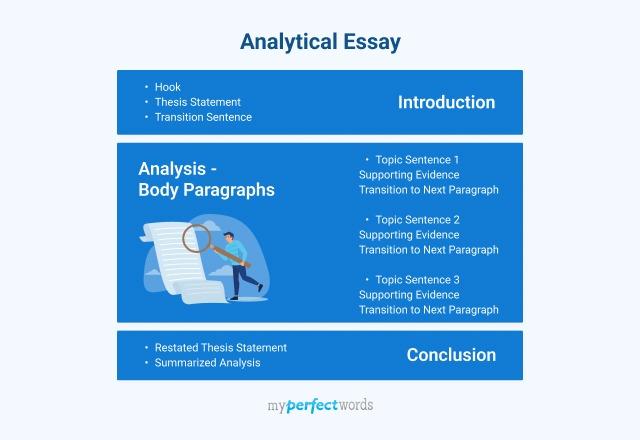
People also read
Analytical Essay Guide with Examples & Tips
Interesting Analytical Essay Topics Ideas for Students
How to Craft Analytical Essay Outline? An Easy Guide
Writing an analytical essay can be tough for students. It requires a deep understanding of the topic and the ability to break it down into smaller parts. This can cause stress, lower grades, and frustration among students.
But don't worry! We have a solution for you. In this blog, we'll give you great analytical examples and simple tips for writing amazing analytical essays.
Ready to tackle the analytical essay? Let's get started!
- 1. Understanding Analytical Writing
- 2. Analytical Essay Examples
- 3. Analytical Essay Outline Example
- 4. Analytical Essay Topics Examples
- 5. Tips to Write an Effective Analytical Essay
Understanding Analytical Writing
An analytical essay is a type of academic writing that looks into a specific subject, dissecting it into its various components and examining how they interrelate.
It requires the writer to not only present a clear understanding of the topic but also to analyze and evaluate it critically.
Unlike a descriptive essay , an analytical essay demands a more in-depth exploration, often involving an argument or thesis statement that guides the critical analysis.
Analytical Essay Examples
To truly understand the art of analytical essay writing, one of the most effective methods is to examine practical examples.
Analytical essay examples provide a clear blueprint of how to approach this type of essay successfully. So, read the examples below to find inspiration for writing a clear analytical essay.
Analytical Essay Example PDF For Students
Here are some analytical essay examples for students in PDF form that you can read and download for free:
Analytical Essay Example (Pdf)
Analytical Essay Example Sample
Analytical Essay Structure
Analytical Essay Example University
Analytical Essay Example College
Analytical Essay Examples For High School
Short Analytical Essay Example
If you are still having difficulty, here are some more examples of analytical essays to help you get inspired.
How To Write An Analytical Essay - Example
APA Analytical Essay Example
Analytical Essay Example APA Format
Analytical Essay Example on A Book
Macbeth Analytical Essay Example
Analytical Essay Example Movie
Analytical Essay Outline Example
When tackling an analytical essay create an outline that is well structured. This outline serves as a roadmap, guiding you through the essay-writing process. The proper structure ensures you don't miss vital elements.
Let's break down the essential sections of an analytical essay outline with examples:
Introduction - Setting the Stage
In the introduction , your aim is to set the stage for your analysis. This section should introduce the topic, provide context, and present a clear thesis statement that outlines the main argument or focus of your essay.
Let’s take a look at another thesis statement for an analytical essay example:
Body - Analyzing Key Points
The body paragraphs of your analytical essay typically are where the real analysis takes place. This section can be divided into multiple paragraphs, each addressing a specific point or aspect related to your thesis.
Here, you should provide evidence, examples, and critical analysis to support your argument.
Conclusion - Summarize Key Points
As you reach the essay conclusion , it's time to tie it all together. Summarize your main points, restate your thesis statement, and underscore the importance of your analysis.
Remember, this is not the place to introduce new background information. Instead, offer insights and an impactful recap of your discoveries.
Conclusion for analytical essay example:

Paper Due? Why Suffer? That's our Job
Analytical Essay Topics Examples
Choosing the right type of essay topic is an important first step when writing an analytical essay. The topic you select should be engaging, relevant, and suitable for in-depth analysis.
Here are some thought-provoking analytical essay topics to consider:
- The Symbolism of the "Green Light" in F. Scott Fitzgerald's "The Great Gatsby"
- The Impact of Social Media on Mental Health
- Analyzing the Causes and Consequences of Income Inequality
- The Role of Nature in Shakespeare's Sonnets
- Analyzing the Historical Significance of the Industrial Revolution
- The Influence of Technology on Education
- The Psychology of Marketing and Consumer Behavior
- The Impact of Globalization on Cultural Identity
- Analyzing the Ethical Dilemmas in Artificial Intelligence
- The Evolution of Environmental Policies and Their Impact on Conservation
Are you still having trouble coming up with a good analytical essay topic? Check out this blog for more than 150 compelling analytical essay topics .
Tips to Write an Effective Analytical Essay
Writing an effective analytical essay requires a structured approach and attention to detail. Here are some valuable tips to help you craft a compelling analytical essay:
- Focus Your Topic: Select a specific topic or aspect for in-depth analysis rather than a broad subject matter.
- Research Thoroughly: Gather reliable sources and evidence to support your analysis.
- Create a Well-Structured Outline: Plan your essay with a clear introduction, body, and conclusion.
- Analyze, Don't Summarize: Avoid summarizing the subject; instead, critically evaluate and interpret it.
- Use Clear Topic Sentences: Start each paragraph with a clear topic sentence that relates to your thesis.
- Provide Evidence: Support your analysis with quotes, examples, and data from your research.
- Critical Thinking: Engage in critical thinking to question assumptions and explore alternative perspectives.
- Maintain Clarity: Use clear and concise language to convey your points effectively.
In conclusion, the analytical essay stands as a potent tool for honing your skills and conveying your understanding of complex subjects.
Through this guide, we've explored the essence of analytical essays and the essential steps to compose a compelling piece.
If you are assigned to write an analytical essay, take help from the above-mentioned examples. Another option is to get assistance from a professional analytical essay writer.
The top analytical essay writing service at MyPerfectWords.com can assist you and provide customized written essays and papers for every academic level. We offer the best essay writing service.
So, why wait? Get expert help from our essay writing service for students now.
Frequently Asked Questions
What is an example of an analytical sentence.
A concise example of an analytical sentence is: In "To Kill a Mockingbird," Harper Lee uses the character of Atticus Finch to explore themes of morality and justice in the face of racial prejudice.
What is an example of analysis?
Here is an example of analysis: Through Atticus Finch's unwavering commitment to defending Tom Robinson, despite facing societal backlash, Lee highlights the importance of integrity and standing up for what is right, even in the face of adversity.

Write Essay Within 60 Seconds!

Nova Allison is a Digital Content Strategist with over eight years of experience. Nova has also worked as a technical and scientific writer. She is majorly involved in developing and reviewing online content plans that engage and resonate with audiences. Nova has a passion for writing that engages and informs her readers.

Paper Due? Why Suffer? That’s our Job!
Keep reading
-9391.jpg&w=828&q=75)

How to Write an Analysis Essay: Examples + Writing Guide
An analysis / analytical essay is a standard assignment in college or university. You might be asked to conduct an in-depth analysis of a research paper, a report, a movie, a company, a book, or an event. In this article, you’ll find out how to write an analysis paper introduction, thesis, main body, and conclusion, and analytical essay example.
So, what is an analytical essay? This type of assignment implies that you set up an argument and analyze it using a range of claims. The claims should be supported by appropriate empirical evidence. Note that you need to explore both the positive and negative sides of the issue fully.
Analytical skills are the key to getting through your academic career. Moreover, they can be useful in many real-life situations. Keep reading this article by Custom-writing experts to learn how to write an analysis!
❓ What Is an Analytical Essay?
- 🤔 Getting Started
📑 Analytical Essay Outline
- 📔 Choosing a Title
- 💁 Writing an Introduction
- 🏋 Writing a Body
- 🏁 Writing a Conclusion
🔗 References
Before you learn how to start an analysis essay, you should understand some fundamentals of writing this type of paper. It implies that you analyze an argument using a range of claims supported by facts . It is essential to understand that in your analysis essay, you’ll need to explore the negative sides of the issue and the positive ones. That’s what distinguishes an analytical essay from, say, a persuasive one.

These are the steps to write an academic paper :
- Review the literature . Before starting any paper, you should familiarize yourself with what has already been written in the field. And the analytical essay is no exception. The easiest way is to search on the web for the information.
- Brainstorm ideas. After you’ve done your search, it is time for a brainstorm! Make a list of topics for your analysis essay, and then choose the best one. Generate your thesis statement in the same way.
- Prepare an outline . Now, when you’ve decided on the topic and the thesis statement of your analytical essay, think of its structure. Below you will find more detailed information on how your paper should be structured.
- Write the first draft. You’ve done a lot of work by now. Congratulations! Your next goal is to write the first version of your analysis essay, using all the notes that you have. Remember, you don’t need to make it perfect!
- Polish your draft. Now take your time to polish and edit your draft to transform it into the paper’s final version.
You are usually assigned to analyze an article, a book, a movie, or an event. If you need to write your analytical essay on a book or an article, you’ll have to analyze the style of the text, its main points, and the author’s purported goals.
🤔 Analytical Essay: Getting Started
The key to writing an analysis paper is to choose an argument that you will defend throughout it. For example: maybe you are writing a critical analysis paper on George Orwell’s Animal Farm The first and imperative task is to think about your thesis statement. In the case of Animal Farm , the argument could be:
In Orwell’s Animal Farm , rhetoric and language prove to be more effective ways to keep social control than physical power.
The University of North Carolina at Chapel Hill gives a great explanation of the thesis statement , how to create one, and what its function is.
But that’s not all. Once you have your thesis statement, you need to break down how you will approach your analysis essay to prove your thesis. To do this, follow these steps:
- Define the main goal(s) of your analysis . Remember that it is impossible to address each and every aspect in a single paper. Know your goal and focus on it.
- Conduct research , both online and offline, to clarify the issue contained within your thesis statement.
- Identify the main parts of the issue by looking at each part separately to see how it works.
- Try to clearly understand how each part works.
- Identify the links between the various aspects of the topic .
- By using the information you found, try to solve your main problem .
At this point, you should have a clear understanding of both the topic and your thesis statement. You should also have a clear direction for your analysis paper firmly planted in your mind and recorded in writing.
This will give you what you need to produce the paper’s outline.
An outline is the starting point for your work. A typical analytical essay features the usual essay structure. A 500-word essay should consist of a one-paragraph introduction, a three-paragraph body, and a one-paragraph conclusion. Find below a great analytical essay outline sample. Feel free to use it as an example when doing your own work!
Analysis Essay: Introduction
- Start with a startling statement or provocative question.
“All animals are equal, but some animals are more equal”. Animal Farm abounds in ironic and provocative phrases to start an analytical essay.
- Introduce the work and its author.
- Give background information that would help the reader understand your opinion.
- Formulate a thesis statement informing the reader about the purpose of the essay. Essay format does not presuppose telling everything possible on the given topic. Thus, a thesis statement tells what you are going to say, implying what you will not discuss, establishing the limits.
In Animal Farm, Orwell uses different irony types to ridicule totalitarianism to manifest its inability to make every member of society equal and happy.
Analysis Essay: Body
The analytical essay structure requires 2-3 developmental paragraphs, each dedicated to one separate idea confirming your thesis statement. The following template should be used for each of the body paragraphs.
- Start with a topic sentence that supports an aspect of your thesis.
Dramatic irony is used in Animal Farm to point out society’s ignorance.
- Continue with textual evidence (paraphrase, summary, direct quotations, specific details). Use several examples that substantiate the topic sentence.
Animals are unaware of the fact that Boxer was never sent to the hospital. He was sent to the slaughterhouse. However, the reader and writer understand that this is a lie.
- Conclude with an explanation.
By allowing the readers to learn some essential facts before the characters, dramatic irony creates suspense and shows how easy it is to persuade and manipulate the public.
Analysis Essay Conclusion
The next four points will give you a short instruction on how to conclude an analytical essay.
- Never use new information or topics here.
- Restate your thesis in a different formulation.
- Summarize the body paragraphs.
- Comment on the analyzed text from a new perspective.
📔 Choosing a Title for Your Analysis Essay
Choosing a title seems like not a significant step, but it is actually very important. The title of your critical analysis paper should:
- Entice and engage the reader
- Be unique and capture the readers’ attention
- Provide an adequate explanation of the content of the essay in just a few carefully chosen words
In the Animal Farm example, your title could be:
“How Do the Pigs Manage to Keep Social Control on Animal Farm?”
Analysis Essay Topics
- Analyze the media content.
- Analyze the specifics and history of hip-hop culture.
- Sociological issues in the film Interstellar .
- Discuss the techniques M. Atwood uses to describe social issues in her novel The Handmaid’s Tale .
- Compare and analyze the paintings of Van Gogh and George Seurat.
- Analysis of Edgar Allan Poe’s The Black Cat .
- Examine the juvenile crime rates.
- Describe the influence of different parenting styles on children’s mind.
- Analyze the concept of the Ship of Theseus .
- Compare and analyze the various views on intelligence .
- Analysis of The Yellow Wallpaper by Charlotte Perkins Gilman .
- Discuss the techniques used by W. Shakespeare in A Midsummer Night’s Dream .
- Analyze the biography of Frederic Chopin .
- Manifestation of the Chicano culture in the artwork An Ofrenda for Dolores del Rio .
- Similarities and differences of Roman, Anglo-Saxon, and Spanish Empires .
- Describe the problem of stalking and its impact on human mental health.
- Examine the future of fashion .
- Analyze the topicality of the article Effectiveness of Hand Hygiene Interventions in Reducing Illness Absence .
- Discuss Thomas Paine’s impact on the success of American revolution.
- Meaningful messages in Recitatif by Toni Morrison .
- Explore the techniques used by directors in the film Killing Kennedy .
- Compare the leadership styles of Tang Empress Wu Zetian and the Pharaoh Cleopatra .
- Evaluate the credibility of Kristof’s arguments in his article Remote Learning Is Often an Oxymoron.
- Analyze genetically modified food .
- Examine the influence of Europeans on Indian tribes in The Narrative of the Captivity and Restoration of Mrs. Mary Rowlandson .
- Describe the rhetoric techniques used in The Portrait of Dorian Gray by Oscar Wilde .
- The importance of fighting against violence in communities in the documentary film The Interrupters .
- Analyze indoor and outdoor pollution .
- Analyze the issue of overprotective parenthood .
- Explore the connection between eating habits and advertisement.
- Discuss the urgence of global warming issue .
- Influence of sleep on people’s body and mental health.
- Analyze the relationship between Christianity and sports .
- Discuss the concept of leadership and its significance for company efficiency.
- Analyze the key lessons of the book Rich Dad Poor Dad by Robert Kiyosaki .
- Examine the specifics of nursing ethic .
- The theme of emotional sufferings in the short story A Rose for Emily .
- Analysis of bias in books for children .
- Analyze the rhetoric of the article Public Monuments .
- Describe the main messages in Jean-Paul Sartre’s Nausea .
- Explore the problem of structural racism in healthcare.
- The reasons of tango dance popularity.
- The shortcomings of the American educational system in Waiting for Superman.
- Analyze and compare Erin’s Law and Megan’s Law .
- Analyze the James Madison’s essay Federalist 10 .
- Examine symbols in the movie The Joker .
- Compare the thematic connection and stylistic devices in the poems The Road Not Taken and Find Your Way .
- Describe and analyze the life of Eddie Bernice Johnson.
- Explore the social classes in America .
- Crucial strengths and weaknesses of the main translation theories .
💁 Writing Your Analytical Essay Introduction
You must understand how to compose an introduction to an analysis paper. The University of Wollongong describes the introduction as a “map” of any writing. When writing the introduction, follow these steps:
- Provide a lead-in for the reader by offering a general introduction to the topic of the paper.
- Include your thesis statement , which shifts the reader from the generalized introduction to the specific topic and its related issues to your unique take on the essay topic.
- Present a general outline of the analysis paper.
Watch this great video for further instructions on how to write an introduction to an analysis essay.
Example of an Analytical Essay Introduction
“Four legs good, two legs bad” is one of the many postulates invented by George Orwell for his characters in Animal Farm to vest them with socialist ideology and control over the animal population. The social revolution on Manor Farm was built on language instruments, first for the collective success of the animals, and later for the power consolidation by the pigs. The novel was written in 1945 when the transition from limitless freedoms of socialist countries transformed into dictatorship. Through his animal protagonists, the author analyzes the reasons for peoples’ belief in the totalitarian regime. In Orwell’s Animal Farm , rhetoric and language prove to be more effective ways to keep social control than physical power.
🏋 Writing Your Analytical Essay Body
The body of the paper may be compared to its heart. This is the part where you show off your talent for analysis by providing convincing, well-researched, and well-thought-out arguments to support your thesis statement. You have already gathered the information, and now all you may start crafting your paper.
To make the body of an analytical essay, keep the following in mind:
- Discuss one argument per paragraph , although each argument can relate to multiple issues
- Strike a balance between writing in an unbiased tone, while expressing your personal opinion
- Be reasonable when making judgments regarding any of the problems you discuss
- Remember to include the opposing point of view to create a balanced perspective
The bottom line is: you want to offer opposing views, but you must pose your arguments so they will counter those opposing views and prove your point of view. Follow these steps when constructing each body paragraph:
- Choose the main sentence. The main or topic sentence will be the first line in your essay. The topic sentence is responsible for presenting the argument you will discuss in the paragraph and demonstrate how this argument relates to the thesis statement.
- Provide the context for the topic sentence , whether it relates to a quote, a specific incident in society, or something else. Offer evidence on who, what, where, when, why, and how.
- Give your analysis of the argument and how it adequately proves your thesis.
- Write a closing sentence that sums up the paragraph and provides a transition to the following paragraph.
Example of an Analytical Essay Body
Literacy can grant power, provided that there are animals who cannot read or write. In the beginning, the animals’ literacy and intellect are relatively the same. Old Major is the cleverest pig; he is the kind old philosopher, like Karl Marx or Vladimir Lenin. During his retirement, he develops a theory that all humans are the root of evil. His speech was the foundation for the pigs’ assumption of power. They refined his ideas into a new ideology and called it Animalism. They also learned how to read. It allowed the pigs to declare themselves the “mind workers.” Therefore, the pigs’ literacy assured the illiterate animals in their objective superiority.
Meanwhile, as the pigs were the intellectual elite, they were not supposed to work, which raised their social status by itself. Snowball tried to promote education among all the animals, but most of them failed to master the alphabet. This is a metaphor for the general public being predominantly ignorant and easy to manipulate. At the same time, Boxer and other animals that spend most of the day in hard work merely have no time to develop their intellect. Thus, the pigs’ intention to build a school for pig children was highly efficient. Unequal access to education and unequal ability to express one’s thoughts in perspective reinforce the social divide, making the pigs smarter and more powerful and undermining other animals’ self-esteem.
At this point, the pigs resort to propaganda and rhetoric. Squealer uses his oratorical gift to refine the pigs’ message to the other animals. Upon Napoleon’s order, he breaks the Seven Commandments of farm governance. At night, he climbs the ladder to change them, and once even falls from the ladder trying to change the commandment on alcohol. The “proletarian” animals soon forget what the Seven Commandments were like in the first place and are unsure if they have ever been altered. Further on, Minimus writes a poem praising Napoleon. Finally, Squealer replaces the Commandments with a single assertion: “All animals are equal, but some animals are more equal than others.” Language is no longer used to convince. It is used to control and manipulate.
🏁 Writing Your Analytical Essay Conclusion
The conclusion is short and sweet. It summarizes everything you just wrote in the essay and wraps it up with a beautiful shiny bow. Follow these steps to write a convincing conclusion:
- Repeat the thesis statement and summarize your argument. Even when using the best summary generator for the task, reread it to make sure all the crucial points are included.
- Take your argument beyond what is simply stated in your paper. You want to show how it is essential in terms of the bigger picture. Also, you may dwell on the influence on citizens of the country.
Example of an Analytical Essay Conclusion
Because of everything mentioned above, it becomes clear that language and rhetoric can rise to power, establish authority, and manipulate ordinary people. Animal Farm is the simplified version of a communist society. It shows how wise philosophers’ good intentions can be used by mean leaders to gain unopposed power and unconditional trust. Unfortunately, this can lead to the death of many innocent animals, i.e., people, as totalitarianism has nothing to do with people’s rule. Therefore, language and oratory are potent tools that can keep people oppressed and weak, deprive them of any chance for improvement and growth, and make them think that there is no other possible existence.
Now you are ready to write an analysis essay! See, it’s easier than you thought.
Of course, it’s always helpful to see other analysis essay examples. The University of Arkansas at Little Rock provides some great examples of an analytical paper .
✏️ Analysis Essay FAQ
A great analytical paper should be well-structured, cohesive, and logically consistent. Each part of the essay should be in its place, creating a smooth and easy-to-read text. Most importantly, the statements should be objective and backed by arguments and examples.
It is a paper devoted to analyzing a certain topic or subject. An analysis essay is all about reviewing certain details of the subject and interpreting them. For example, such an analysis for a poem includes a description of artistic means that helped the poet convey the idea.
Writing an analytical essay on a book/movie/poem start with an outline. Point out what catches the eye when reviewing the subject. See how these details can be interpreted. Make sure that you refer to the main idea/message. Add an appropriate introduction and a logical conclusion.
Being more analytical in writing can be essential for a student. This is a skill that can be self-taught: try to start noticing subtle details and describe them. As you write, interpret the facts and strive to draw conclusions. Try to be as objective as possible.
- Elements of Analysis
- How Can I Create Stronger Analysis?
- How to Write a Literary Analysis Essay: Bucks.edu
- Essay Structure | – Harvard College Writing Center
- Analytical Writing: Looking Closely (Colostate.edu)
- Analytical Thesis Statements – University of Arizona
- Writing an analytic essay – UTSC – University of Toronto
- Organizing Your Analysis // Purdue Writing Lab
- How to Write an Analytical Essay: 15 Steps (with Pictures)
- Share to Facebook
- Share to Twitter
- Share to LinkedIn
- Share to email

A film analysis essay might be the most exciting assignment you have ever had! After all, who doesn’t love watching movies? You have your favorite movies, maybe something you watched years ago, perhaps a classic, or a documentary. Or your professor might assign a film for you to make a...

A critique paper is an academic writing genre that summarizes and gives a critical evaluation of a concept or work. Or, to put it simply, it is no more than a summary and a critical analysis of a specific issue. This type of writing aims to evaluate the impact of...

What is a creative essay, if not the way to express yourself? Crafting such a paper is a task that allows you to communicate your opinion and tell a story. However, even using your imagination to a great extent doesn’t free you from following academic writing rules. Don’t even get...

A compare and contrast essay — what is it? In this type of paper, you compare two different things or ideas, highlighting what is similar between the two, and you also contrast them, highlighting what is different. The two things might be events, people, books, points of view, lifestyles, or...

What is an expository essay? This type of writing aims to inform the reader about the subject clearly, concisely, and objectively. The keyword here is “inform”. You are not trying to persuade your reader to think a certain way or let your own opinions and emotions cloud your work. Just stick to the...
![template for analysis essay Short Story Analysis: How to Write It Step by Step [New]](https://custom-writing.org/blog/wp-content/uploads/2020/12/man-sits-end-trolltunga-before-mountains-284x153.jpg)
Have you ever tried to write a story analysis but ended up being completely confused and lost? Well, the task might be challenging if you don’t know the essential rules for literary analysis creation. But don’t get frustrated! We know how to write a short story analysis, and we are...

Have you ever tried to get somebody round to your way of thinking? Then you should know how daunting the task is. Still, if your persuasion is successful, the result is emotionally rewarding. A persuasive essay is a type of writing that uses facts and logic to argument and substantiate...
![template for analysis essay Common Essay Mistakes—Writing Errors to Avoid [Updated]](https://custom-writing.org/blog/wp-content/uploads/2020/12/avoid-mistakes-ccw-284x153.jpg)
One of the most critical skills that students gain during their college years is assignment writing. Composing impressive essays and research papers can be quite challenging, especially for ESL students. Nonetheless, before learning the art of academic writing, you may make numerous common essay mistakes. Such involuntary errors appear in:...

You’re probably thinking: I’m no Mahatma Gandhi or Steve Jobs—what could I possibly write in my memoir? I don’t even know how to start an autobiography, let alone write the whole thing. But don’t worry: essay writing can be easy, and this autobiography example for students is here to show...
![template for analysis essay Why I Want to Be a Teacher Essay: Writing Guide [2024]](https://custom-writing.org/blog/wp-content/uploads/2020/12/senior-male-professor-writing-blackboard-with-chalk3-284x153.jpg)
Some people know which profession to choose from childhood, while others decide much later in life. However, and whenever you come to it, you may have to elaborate on it in your personal statement or cover letter. This is widely known as “Why I Want to Be a Teacher” essay.
![template for analysis essay Friendship Essay: Writing Guide & Topics on Friendship [New]](https://custom-writing.org/blog/wp-content/uploads/2020/12/smiley-female-friends-fist-bumping-284x153.jpg)
Assigned with an essay about friendship? Congrats! It’s one of the best tasks you could get. Digging through your memories and finding strong arguments for this paper can be an enjoyable experience. I bet you will cope with this task effortlessly as we can help you with the assignment. Just...

When you are assigned an autobiography to write, tens, and even hundreds of questions start buzzing in your head. How to write autobiography essay parts? What to include? How to make your autobiography writing flow? Don’t worry about all this and use the following three simple principles and 15 creative...
This resource helps me a lot. Thanks! You guys have great information. Do you think I can use these steps when taking a test? Could it be known as plagiarized if I just copy and paste the information?
Thanks, very good information.
Thanks for learning how to critique research papers in a proper way! This is what I need to cope with this task successfully! Thanks!
How much is an essay, and is there a chance it can be plagiarized?
Analytical Essay Writing
Analytical Essay Examples

Analytical Essay Examples to Ace Your Grades
12 min read
Published on: Feb 6, 2020
Last updated on: Mar 1, 2024

People also read
A Complete Analytical Essay Writing Guide
List of Best Analytical Essay Topics for Students
Analytical Essay Outline - Guide & Template
Share this article
Are you struggling to wrap your head around the idea of writing an analytical essay?
With so many elements to consider, from analysis and research to concise expression, it's easy to get lost in the process.
But fear not! Our analytical essay example guide will light the way.
By studying these examples, you'll be able to present your ideas in a manner that will leave a lasting impression on readers.
So, grab your note-taking pen, sharpen your analytical skills, and let's get started!
On This Page On This Page -->
Analytical Essay Overview
An analytical essay is a piece of document that analyzes a topic or subject in detail. It studies the topic by dividing it into sections and then interprets the observed information.
An analytical or analysis essay can be written for any form of literature or artwork. The writer analyzes the information, evaluates it, and interprets it for the readers.
If you are assigned this essay to draft for your academics, it is advised to go through a few good examples. It will help you understand the type of document to draft and the correct writing process.
Continue reading the blog to find out how a perfect analysis essay is written through examples.
Need an overview of how to write an analytical essay? This video provides a thorough summary to help you out!
The key to writing a good analytical essay is to have a strong grasp of the essay type and a clear understanding of the writing process.
Therefore, we have assembled an array of examples to give you a better understanding of analytical essays. Let's take a look at a short analytical essay example.
Before diving further, we will look at the various types of analytical essays with examples.
Literary Analysis Essay Example
A literary analysis essay is a type of paper that studies and interprets a piece of literature in detail. The writer analyzes different elements such as plot, situations, choice of characters, and message influence in the original text.
All the literary terms are studied in particular to draft this analysis paper type. A literary analysis essay uses the basic essay outline to organize and arrange information in the content.
Introduction
- Body Paragraphs
To understand this writing form, carefully observe the example provided.
Literature Analytical Essay Example
Ready to become an expert in literary analysis? Unlock the guide to literary analysis essays with just one click!
Critical Analysis Essay Example
A critical analysis essay requires a writer to analyze a document and form an argument over it as well. This analysis essay type can be written on any piece of writing, movie, or art.
The primary purpose of a critical analysis paper is to determine the authorâs message or argument. Also, evaluate it by forming a stance on it. All the writing elements are critically analyzed, along with the techniques used by the author to persuade the audience.
This is how a critical analysis essay is written:
Critical Analysis Essay Example (PDF)
Want to learn more about critical analysis essays ? Visit this link!
Poetry Analysis Essay Example
Just as the name suggests, a poetry analysis essay analyzes a poem and its different elements. It studies the content, the structure of the poem, and its historical significance. It is a common essay type that is assigned to literature or language students.
Poetry Analysis Essay Example (PDF)
Tough Essay Due? Hire a Writer!

Rhetorical Analysis Essay Example
A rhetorical analysis essay is a type that is based on logic and facts. This essay examines how the author drafted a document and what persuasive techniques were used to convince the audience.
Take a look at this exemplary rhetorical analysis PDF sample!
Rhetorical Analysis Essay Example (PDF)
Character Analysis Essay Example
A character analysis essay studies fictional as well as no fictional characters in detail. Characters that appear in films and literature are powerful and need a detailed analysis to identify their significance in the story.
Check out this incredible example of character analysis in PDF format!
Character Analysis Essay Example (PDF)
Process Analysis Essay Example
A process analysis essay is a type of essay that explains a step-by-step procedure of performing a certain task. This essay requires a writer to explicitly share the right process.
This essay is written using the traditional essay outline as well. A writer begins an easy with an introduction, which is followed by strong body paragraphs. The body paragraphs lead the audience towards the conclusion of the essay.
Process Analysis Essay Example (PDF)
Good Analytical Essay Examples
Below are some excellent analytical essay examples that can help illuminate the way.
Analytical Essay Example College
Analytical Essay Example University
Analytical Essay Example High School
Here are a few out-of-the-ordinary analytical essay examples, take a look!
APA Analytical Essay Example
Short Analytical Essay Example
History Analytical Essay Example
Analytical Essay Outline
An analytical essay outline is similar to the essay outline used to organize information for other writing types. 5 paragraph structure arranges the data for your analytical essay. According to this structure, the content of an essay is divided into the following sections:
- Body Paragraph 1
- Body Paragraph 2
- Body Paragraph 3
It does not matter which academic level you belong to, write an analysis essay using this basic outline.
The first section is the introduction, where the writer presents the thesis statement and the main theme of his analytical essay.
The introduction of the essay must contain the following things in order to be attractive:
- A hook statement
- Thesis Statement
Make sure to keep the introductory paragraphs clear and focused. The purpose of writing this section is to motivate the readers to read the entire document. Therefore, it should be interesting and well written.
For an illustrative guide on how to create an analytical essay check out the PDFs below.
Thesis Statement For an Analytical Essay Example
Analytical Essay Introduction Example
The body of the analytical essay contains all the supporting evidence required to prove the thesis statement. Gather information for this section from the original work to support your claims and persuade the audience.
Following are the elements that should be present in the body paragraphs:
- Topic sentence
In order to maintain a logical flow and connection among all the paragraphs, make sure to use transition words .
The conclusion is the last paragraph that sums up the writerâs discussion on the topic. The concluding paragraphs of your analytical essay are based on the following information:
- Restated thesis statement
- Summary of the major points
- Final thought or point of view of the writer.
To write an analytical essay effectively, make sure that the outlining and the writing process are correct. Without knowing the actual writing process of an analytical essay, it is impossible to draft a compelling piece.
How to write an Analytical Essay Example pdf
Analytical Essay Template (PDF)
Analytical Essay Writing Tips
Writing an analytical essay means you have to create an explanatory piece of document. This essay requires an in-depth analysis of every aspect of the topic to be drafted well. Moreover, there are other tips that professionals suggest to make your assignment stand out.
Follow the tips provided by the expert essay writers of CollegeEssay.org and write a fantastic essay.
- Brainstorm ideas for your analytical essay topics and select the most interesting one.
- The topic of your essay should have a wide scope
- Thoroughly read and understand the original document to and analyze every aspect
- Draft an essay outline to arrange your information into a logical content.
- Understand the type of analysis.
- Determine the audience and keep them in mind the whole time while drafting your essay
- Proofread your essay after finishing writing it and make relevant edits.
- If you are having trouble drafting this essay type, seek professional help.
Common Mistakes to Avoid When Writing an Analytical Essay
Here are 5 mistakes to avoid when composing an analytical essay for optimal results:
- Failing to plan and organize : An analytical essay requires structure, coherence, and a clear argument. Start by creating an outline and stick to it while writing.
- Lack of critical analysis : An analytical essay is more than just summarizing information. Ensure to provide your own insights and critical evaluation of the subject matter.
- Not considering counterarguments : A strong analytical essay considers opposing viewpoints and addresses potential counterarguments.
- Improper citation : Ensure to properly cite any sources used in your essay to avoid plagiarism and to give credit to the original authors.
- Inadequate proofreading : Proofread your essay thoroughly to catch any grammatical errors, spelling mistakes, or typos that could impact the quality of your work.
In conclusion, an analytical essay is one of the most complicated forms of essay. However, you can draft it perfectly if you have the basic knowledge.
Go through examples and consult your instructor before starting the writing process. It will help you stay focused and calm during the daunting journey.
Students often fail to provide quality and accuracy for an analytical essay. In such cases, you can always get professional help with much effort. CollegeEssay.org is a professional essay writing service that provides academic help and assistance to all students.
No matter which college essay type you are to draft such as compare and contrast essay , descriptive essay , or an argumentative essay, we have qualified writers to help you.
Simply ask us to ' write my essay for me ' and get your custom-written assignments in no time.
Try our AI writing tool and experience excellence!
What is an analytical essay example?
The goal of an analytical essay is to analyze something in depth so that it can be better understood. These types often focus on analyzing text or processes. But they could also explore ideas if their topic requires more than just a simple explanation.
What is the main purpose of an analytical essay?
An analytical essay is meant to help the reader learn more about something. This type of essay is all about exploring something in-depth and explaining what you see.
How many paragraphs should an analytical essay have?
An analytical essay should have five paragraphs. The first paragraph has some background information and a thesis statement. The next three paragraphs each have an analysis point with evidence to back it up. The last paragraph is the conclusion.
Cathy A. (Literature, Marketing)
For more than five years now, Cathy has been one of our most hardworking authors on the platform. With a Masters degree in mass communication, she knows the ins and outs of professional writing. Clients often leave her glowing reviews for being an amazing writer who takes her work very seriously.
Paper Due? Why Suffer? That’s our Job!

Keep reading

Legal & Policies
- Privacy Policy
- Cookies Policy
- Terms of Use
- Refunds & Cancellations
- Our Writers
- Success Stories
- Our Guarantees
- Affiliate Program
- Referral Program
- AI Essay Writer
Disclaimer: All client orders are completed by our team of highly qualified human writers. The essays and papers provided by us are not to be used for submission but rather as learning models only.
All Formats
Essay Templates
7+ analysis essay templates.
Looking for analysis templates? You’re on the perfect page. Analysis essays tackle about digging deep and elaborating about a certain topic or course of study. It can be a stressful endeavor for some. To have a glimpse of such essays, we have an array of templates for you.
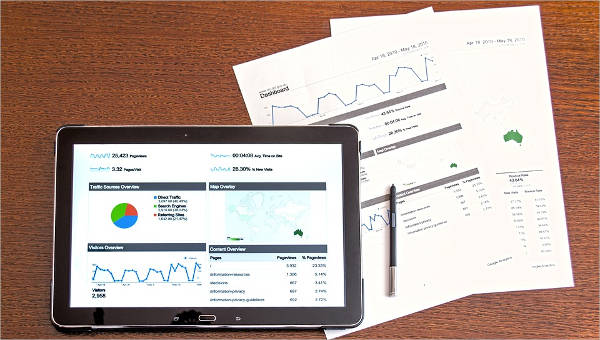
Sample Literary Analysis Essay
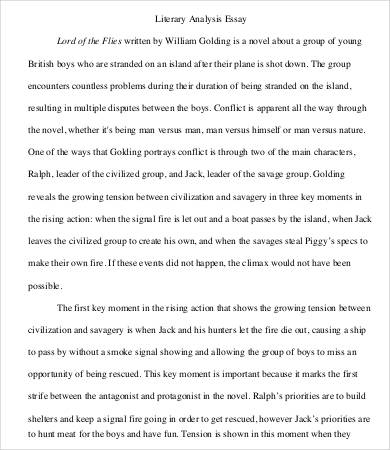
Rhetorical Analysis Essay Sample
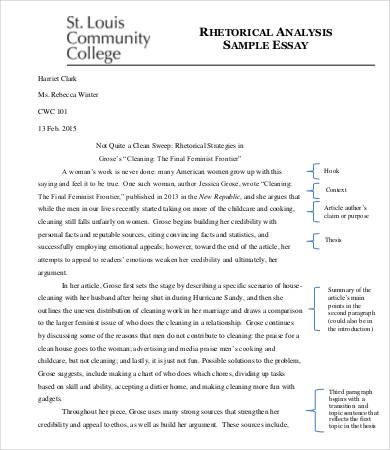
Sample Language Analysis Essay
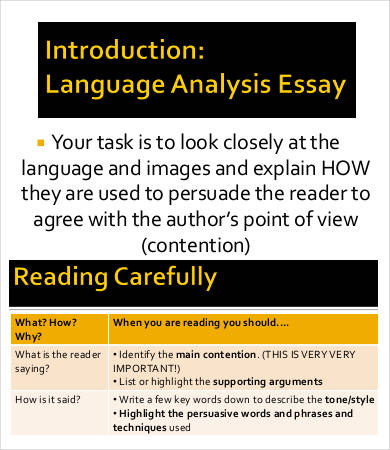
Poetry Analysis Essay Sample
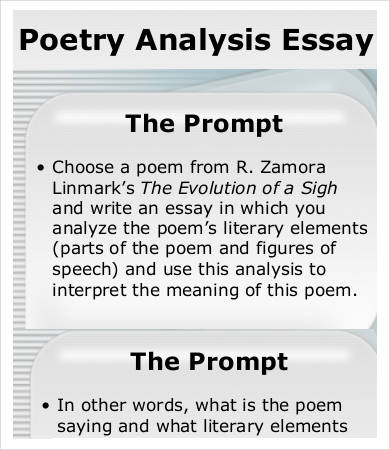
Types of Analysis Essays
- Poetry analysis essay. In dealing with this type of essay, the writer must focus on the poem’s content and structure. The objective of the writer is to foreground the genuine message and significance of the poem.
- Character analysis essay. The focus of this type of essay is the dynamics, traits, and attributes of certain characters. The writer must give his analysis about attributes of the character in relation to the context presented by the the story as a whole.
- Process analysis essay. In this type of essay, the writer is expected to explain the processes and transitions that transpire in a certain natural or man-made cycle.
Process Analysis Essay Sample
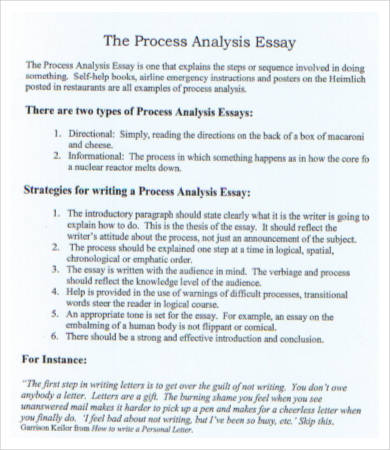
Argumentative Essay Analysis Worksheet
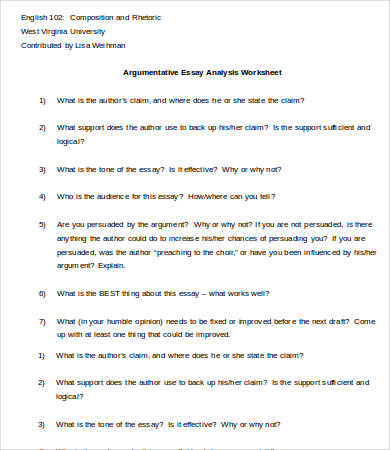
Character Analysis Essay
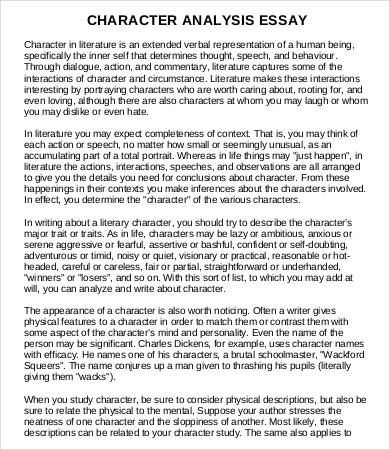
Analysis Essay Rubric

Key Points to Remember on Your Analysis Essays
- Work on your thesis statement. In all types of essay, always make sure that every part of your essay supports your thesis statement. The meat of your paper must support your thesis statement. Your arguments must not contradict or go beyond the parameters set by the thesis statement.
- Start out strong. Shy away from boring introductions. Introduce your essay in a simple yet intellectual and creative manner. You should bear in mind that your goal is to make your readers anticipate for more.
- Fulfill your promises in the body and conclusion. After setting the tone of the essay, ensure you satisfy your readers with a substantial body. Organize your arguments in a logical and methodological manner. And lastly, ace your conclusion. Always start and finish strong.
More in Essay Templates
Article analysis template, argument analysis template, artist analysis template, character analysis template, comparative analysis template, feasibility analysis template, item analysis template, hierarchical task analysis template, literary analysis template, language analysis template.
- How to Make/Create a College Essay [Templates + Examples] 2023
- How to Make/Create a Rhetorical Analysis Essay [Templates + Examples] 2023
- 5+ Free Descriptive Essay Templates – PDF
- 15+ Essay Format Templates – PDF
- 11+ Free Descriptive Essay Templates – PDF, DOC
- 19+ Essay Templates in PDF
- How to Make/Create a Narrative Essay [Templates + Examples] 2023
- 14+ 5 Paragraph Essay Templates – PDF
- How To Make/Create a 5-Paragraph Essay Outline [Templates + Examples] 2023
- 10+ Argumentative Essay Outline Templates – PDF
- 20+ Interview Essay Templates
- 9+ Leadership Essays
- 13+ Literary Essay Templates in Word | Google Docs | Apple Pages | PDF
- 7+ Extended Essay Templates
- 9+ Free Downloadable Informative Essay Samples and Examples
File Formats
Word templates, google docs templates, excel templates, powerpoint templates, google sheets templates, google slides templates, pdf templates, publisher templates, psd templates, indesign templates, illustrator templates, pages templates, keynote templates, numbers templates, outlook templates.

Art Analysis Essay Examples & Samples
- Valedictorian Speech Examples & Samples
- Commencement Speech Examples & Samples
- Graphic Essay Examples & Samples
- Philosophy of Life Essay Examples & Samples
- Synthesis Thesis Examples & Samples
- Rogerian Essay Examples & Samples
- Veterans Day Essay Examples & Samples
- Academic Interest Essay Examples & Samples
- Personal Growth Essay Examples & Samples
- Transcendentalism Essay Examples & Samples
- Letter to My Future Self Examples & Samples
- Literacy Narrative Essay Examples & Samples
- Rhetorical Analysis Examples & Samples
- 3 Page Essay Examples & Samples
- Application Letter Examples and Samples 2024
- Personal Statement Examples and Samples
- Admission Essay Examples and Samples
- Scholarship Essay Examples and Samples
- Statement of Purpose Examples and Samples
- Resume Examples and Samples
- Job Application Letter Examples and Samples
- Business Letter Examples and Samples
- Cover Letter Examples and Samples
- Business Plan Proposal Examples and Samples 2024
- Press-release Examples and Samples
- Meeting Minutes Examples and Samples
- Business Email Examples and Samples
- Meeting Agenda Examples and Samples
- Progress Report Examples and Samples
- Brochure Examples and Samples
- Newsletter Examples and Samples
- White Paper Examples and Samples
- Business Report Examples and Samples
- Business Proposal Examples and Samples
- Business Presentation Examples and Samples
- Recommendation Letter Examples and Samples
- Reference Letter Samples
- Grant Application Examples and Samples
- Hardship Letter Examples and Samples
- Reconsideration Letter Examples and Samples
- Fundraising Letter Examples and Samples
- Complaint Letter Examples and Samples
- Informal Letter Examples and Samples
- Resignation Letter Samples
- Complimentary Letter Examples and Samples
- Refund Letter Examples and Samples
- University Deferral Letter Examples and Samples 2024
- Evaluation Letter Examples and Samples
- Poem Examples and Samples
- Article Examples and Samples
- Short Story Examples and Samples
- Travelogue Examples and Samples
- Interview Examples and Samples
- Haiku Examples and Samples
- Autobiography Examples and Samples
- Screenplay Examples and Samples
- Novel Examples and Samples
- Memoir Examples and Samples
- Song Examples and Samples
- Creative Book Examples
- Essentials of Writing Samples
- Examples of Grammar Handbook
- Writing Process Samples
- Transitions Samples
- Negative Words Samples
- Author Quotes About Writing 2024
- Supporting Evidence Examples and Samples 2024
- Examples of Grammar Mistakes
- Brainstorming Samples
- First Draft Examples and Samples 2024
- Outlining Examples and Samples 2024
- Second Draft Samples
- Thesis Statement Samples
- Final Draft Examples and Samples 2024
- Editing Samples
- Research Samples
- Samples of Introducing Sources
- Review Examples and Samples
- Research Paper Examples and Samples 2024
- Annotated Bibliography Examples and Samples
- Term Paper Examples and Samples
- Speech Examples and Samples
- Coursework Examples and Samples
- Academic Essay Examples and Samples
- Process Paper Examples and Samples
- Case Study Examples and Samples
- Presentation Examples and Samples 2024
- Lab Report Examples and Samples
- Article Review Examples and Samples
- Book Review Examples and Samples
- Film&Movie Review Examples and Samples
- Poetry Analysis Examples and Samples
- Play Review Examples and Samples
- Song&Music Review Examples and Samples
- Research Proposal Examples and Samples
- Capstone Project Examples and Samples
- General Research Examples and Samples
- Thesis Statement Examples and Samples
- Dissertation&Thesis Examples and Samples
- Critical Essay Examples and Samples
- Descriptive Essay Examples and Samples 2024
- Compare and Contrast Essay Examples and Samples
- Narrative Essay Examples and Samples
- Best Persuasive Essay Examples
- Expository Essay Examples and Samples
- Cause and Effect Essay Examples and Samples 2024
- Definition Essay Examples and Samples
- Reflective Essay Examples and Samples
- Analytical Essay Examples and Samples 2024
- Summary Essay Examples and Samples
- Evaluation Essay Examples and Samples
- Argumentative Essay Examples and Samples
- NHS Essay Examples and Samples
- Discourse Community Essay Examples
- Essay on Synthesis Examples, Samples
- Essay on Racism Examples and Samples
- Essay on Gun Violence Examples and Samples
- Essay on Mental Health Examples and Samples
- Essay on Nursing Examples and Samples
- Essay on Gun Control Examples and Samples
- Essay on Education Examples and Samples
- Essay on Who Am I Examples and Samples
- Essay on Bullying Examples and Samples
- Essay on Artificial Intelligence Examples and Samples
- Essay on Music Examples and Samples
- Essay on Problem Solution Examples and Samples
- Essay on Integrity Examples and Samples
- Essay on Leadership Examples and Samples
- Essay on Domestic Violence Examples and Samples
- Essay on Respect Examples and Samples
- Essay on Profile Examples and Samples
- Essay on Life Examples and Samples
- Essay on Autobiographical Examples and Samples
- Essay on Obesity Examples and Samples
- Essay on Cyberbullying Examples and Samples
- Essay on Technology Examples and Samples
- Essay on Professionalism Examples and Samples
- Essay on Career Goals Examples and Samples
- Essay on Animal Testing Examples and Samples
- Essay on Drug Abuse Examples and Samples
- Essay on Immigrations Examples and Samples
- Essay on Capital Punishment Examples and Samples
- Essay on Communication Examples and Samples
- Essay on Friendship Examples and Samples
- Essay on Community Service Examples and Samples
- Essay on My Family Examples and Samples
- Essay on Frankenstein Examples and Samples
- Essay on Pro Life Examples and Samples
- Essay on Anxiety Examples and Samples
- Essay on Industrial Revolution Examples and Samples
- Essay on Research Argument Examples and Samples
- Essay on Food Examples and Samples
- Essay on Great Depression Examples and Samples
- Essay on Self-Reflection Examples and Samples
- Essay on The Great Gatsby Examples and Samples
- Essay On What Does It Mean to Be American Examples and Samples
- Essay on World War 2 Examples and Samples
- Essay on Ethics Examples and Samples
- Essay on Concert Review Examples and Samples
- Essay on Fahrenheit 451 Examples and Samples
- Essay on Nursing Scholarship Examples and Samples
- Essay on Pro Choice Examples and Samples
- Essay on Process Analysis Examples and Samples
- Essay on Solar Energy Examples and Samples
- Essay on Personal Narrative Examples and Samples
- Essay on Hamlet Examples and Samples
- Essay on Civil Rights Examples and Samples
- Essay on Rhetoric Examples and Samples
- Essay on Martin Luther King Examples and Samples
Recent Articles

Nov 27 2023
Themes in The Crucible
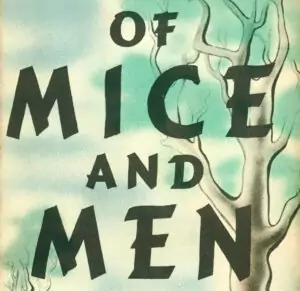
Nov 21 2023
Of Mice and Men Theme

Nov 14 2023
Theme of The Giver by Lois Lowry

Nov 09 2023
Themes of “Night” by Elie Wiesel

Nov 07 2023
Pride and Prejudice Themes

Jun 13 2023
Dance Me Outside (1994) Movie Review Essay Sample, Example
Nov 24 2018
The Cringiest Movie Moments Essay Sample, Example
Aug 28 2018
Top 3 Hollywood Horror Movie Remakes That Are Worse Than Japanese Originals Essay Sample, Example

Jul 24 2018
Starship Troopers: Book vs. Movie Essay Sample, Example
Remember Me
What is your profession ? Student Teacher Writer Other
Forgotten Password?
Username or Email
Free Scenario Analysis Templates
By Courtney Patterson | March 31, 2024
- Share on Facebook
- Share on LinkedIn
Link copied
We’ve compiled the most insightful scenario analysis templates for strategic planners, business analysts, project managers, and executive decision-makers. Utilize these templates to guide your strategic foresight and long-term planning. Included on this page, you’ll find a scenario analysis presentation template , a financial scenario analysis template , an operational risk scenario analysis template , and more. You’ll also learn about the different types of scenario analysis templates — including when to use each — and how to do a scenario analysis .
Excel Simple Scenario Analysis Spreadsheet Template
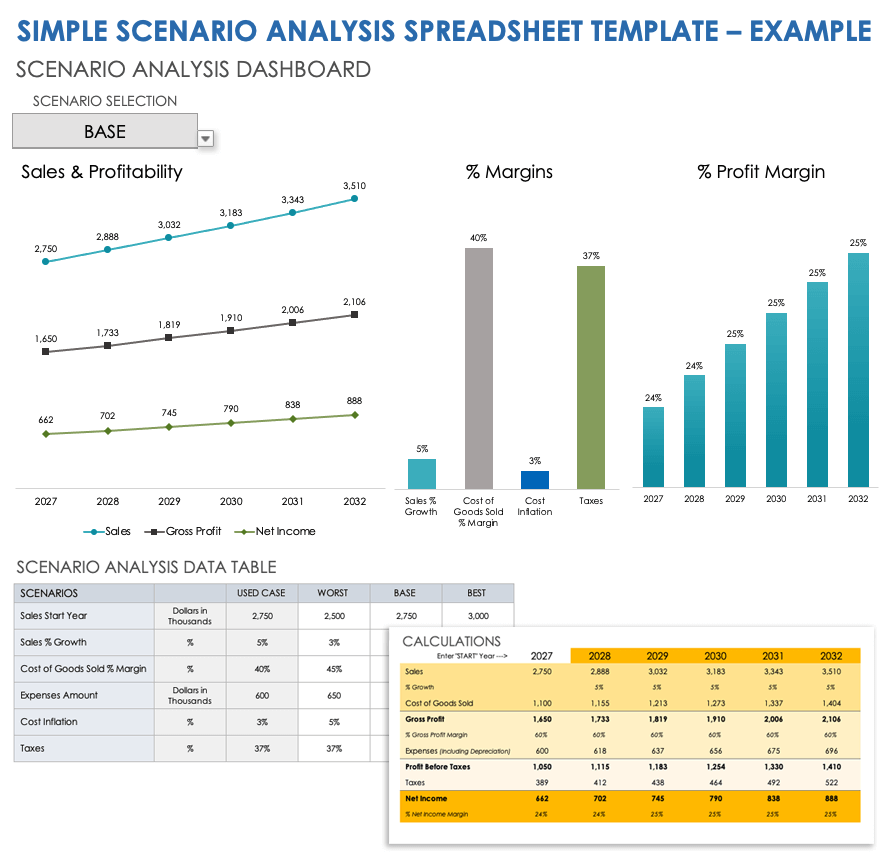
Download the Sample Simple Scenario Analysis Spreadsheet Template for Excel
Download the Blank Simple Scenario Analysis Spreadsheet Template for Excel
When to Use This Template: This simple scenario analysis spreadsheet template, with or without sample data, is ideal when you need a quick assessment of straightforward scenarios. It's perfect for team leaders and small business owners who are in the early stages of project planning or dealing with time-sensitive, smaller-scale projects. Notable Template Features: This template stands out for its user-friendly design and focus on the essential elements of a scenario analysis — without overcomplicating the process. Key features include easy-to-fill sections for scenario description, impact assessment, and outcome visualization, making it an accessible tool for quick decision-making. Explore these free scenario planning templates and examples to systematically evaluate and prepare for potential futures, enhancing your strategic decision-making process.
Simple Scenario Analysis Presentation Template
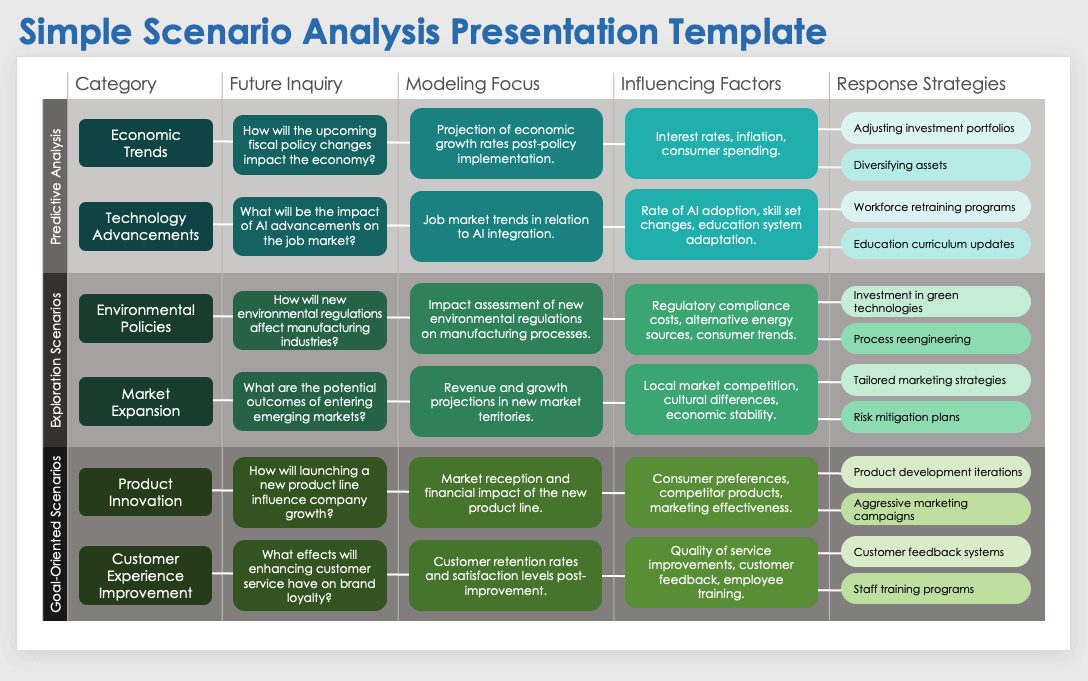
Download a Sample Simple Scenario Analysis Template for
PowerPoint | Google Slides
Download a Blank Simple Scenario Analysis Template for
When to Use This Template: Opt for this simple scenario analysis presentation template when you need to communicate straightforward scenario analyses to your team or stakeholders. With or without sample data, the template is particularly useful for team leaders and small business owners who must present basic scenario outcomes clearly during meetings or strategy sessions. Notable Template Features: This template offers a streamlined format perfect for presentations. Key features include intuitive slide layouts for outlining scenarios and their impacts, along with visual aids to enhance understanding. The template is designed to convey scenario analysis effectively without overwhelming your audience.
Business Analysis Scenario Template
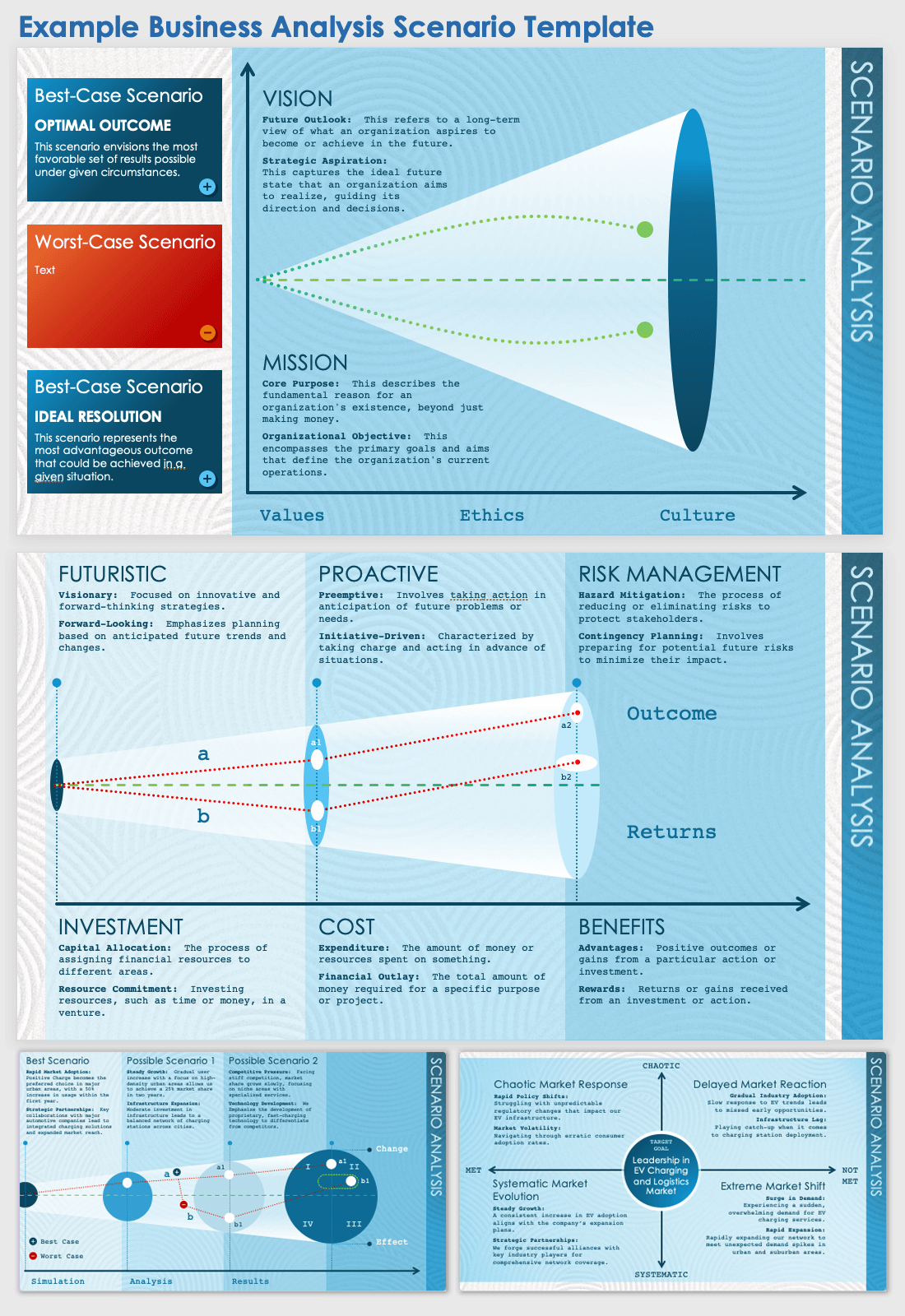
Download a Sample Business Analysis Scenario Template for
Download a Blank Business Analysis Scenario Template for
When to Use This Template: Employ this business analysis scenario template with or without sample data to present a detailed assessment of complex business scenarios, such as shifts in market dynamics or competitive landscapes, to your team or stakeholders. It's particularly useful for business analysts and corporate strategists who need to convey business environment analyses during strategic planning meetings or executive briefings. Notable Template Features: This template features comprehensive slide layouts that facilitate a clear, thorough exploration of various business scenarios. Its standout attributes include dedicated sections for detailing market trends, competitive analysis, and strategic implications, complemented by engaging visual elements. To prioritize tasks and projects efficiently, download one of these free priority matrix templates , tailored to help you align your focus with your most impactful activities.
Financial Scenario Analysis Template
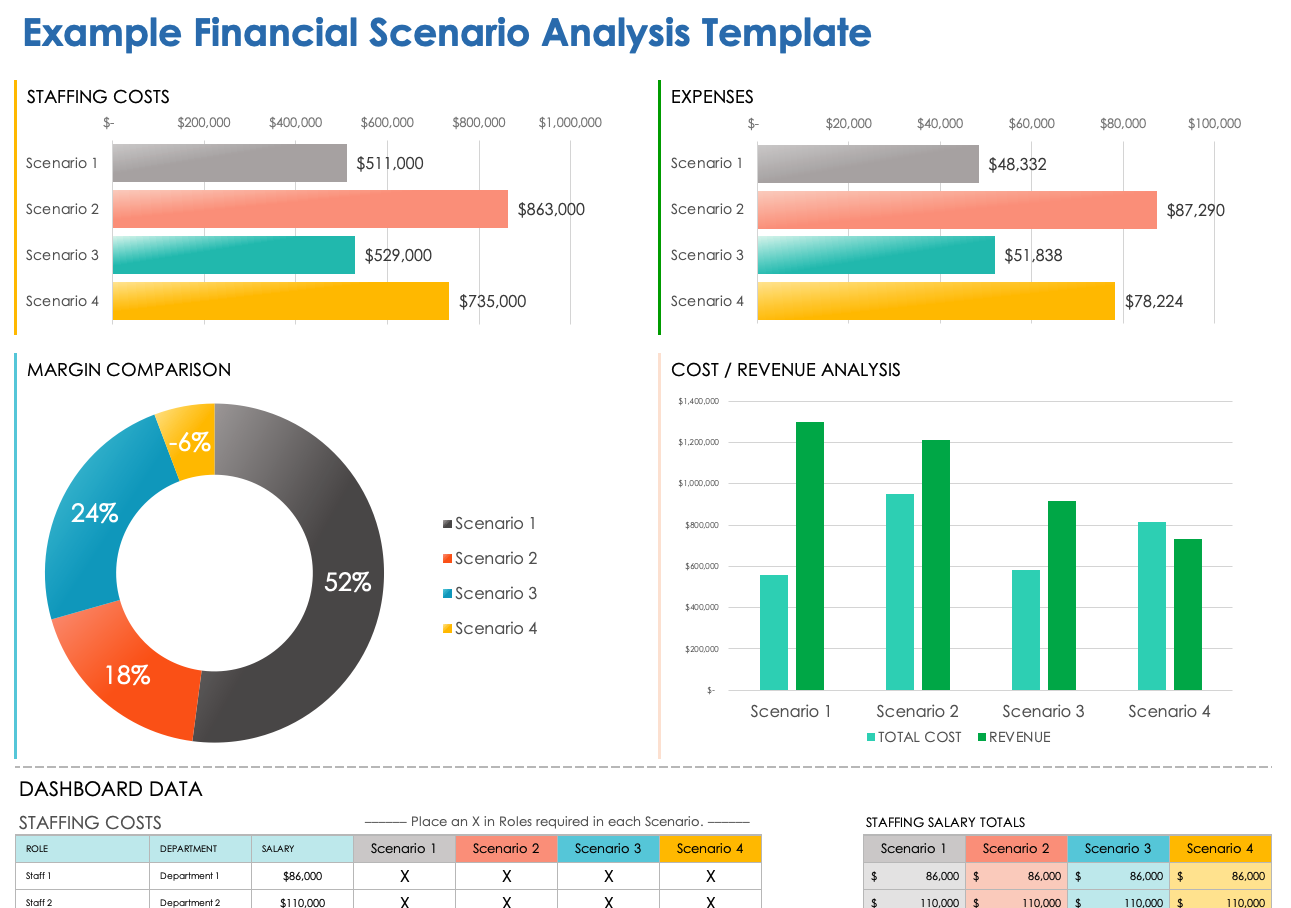
Download a Sample Financial Scenario Analysis Template for
Excel | Google Sheets
Download a Blank Financial Scenario Analysis Template for
When to Use This Template: Utilize this financial scenario analysis template with or without sample data when you need to examine the impact of different market conditions or economic trends on your company's financial standing. It's particularly beneficial for financial analysts and CFOs engaged in critical financial planning and forecasting. Notable Template Features: This template is equipped with detailed slides to help you develop diverse financial outcomes. It features specialized sections for analyzing changes in revenue, costs, and profitability under different scenarios, with graphical elements to represent financial data. The design facilitates clear communication of complex financial forecasts, making it a valuable tool for presentations.
Operational Risk Scenario Analysis Template
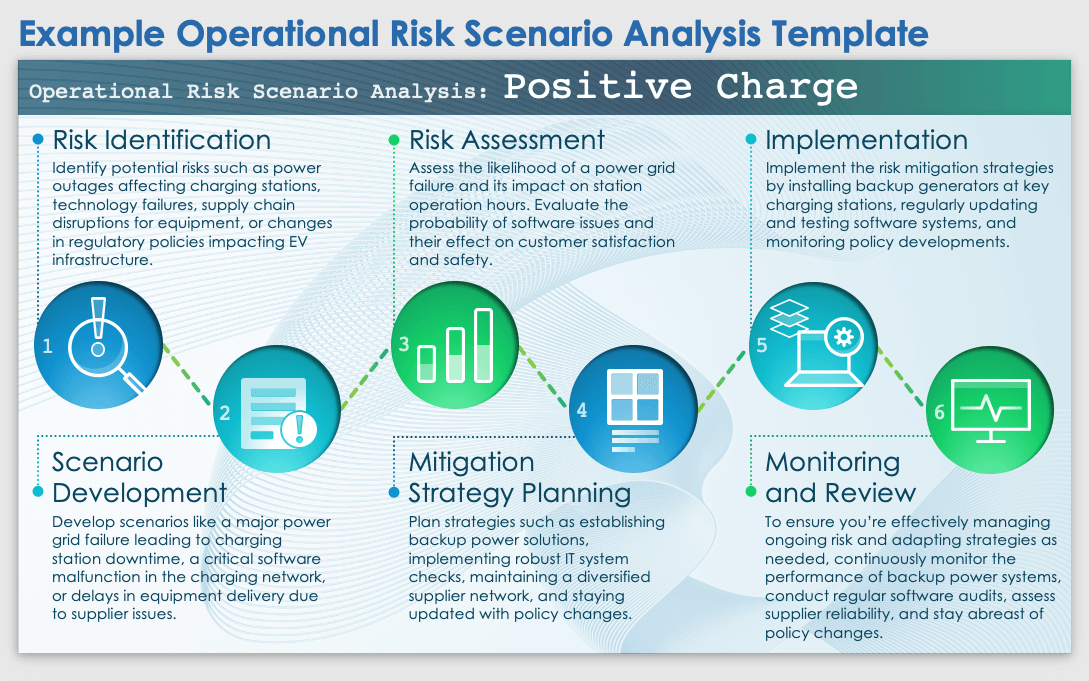
Download a Sample Operational Risk Scenario Analysis Template for
Download a Blank Operational Risk Scenario Analysis Template for
When to Use This Template: This operational risk scenario analysis template with or without sample data is best for risk managers and operations managers who need to identify and assess risks that could disrupt daily operations. It’s an essential tool during risk assessment meetings or operational planning sessions. Notable Template Features: This template is designed to help you systematically outline and analyze operational risks. It includes sections for assessing the likelihood and potential impact of each risk, as well as for planning mitigation strategies. The template’s structured format aids in creating actionable contingency plans, making it an indispensable tool for comprehensive operational risk management. To plan for your team's future needs, explore these free workforce planning templates , designed to help your organization strategically manage and optimize its human resources.
Scenario Analysis Axis Template

Download a Sample Scenario Analysis Axis Template for
Microsoft Word | PowerPoint
Download a Blank Scenario Analysis Axis Template for
When to Use This Template: Turn to this scenario analysis axis template when you need a visual tool to compare and contrast different scenarios. With or without sample data, the template is particularly useful for strategic planners and project managers who need to present options to stakeholders and evaluate them based on factors such as risk and reward. Notable Template Features: This template stands out for its two-dimensional axis system, which enables users to plot scenarios intuitively. It allows you to compare different outcomes based on key variables, enhancing the clarity of strategic discussions. Its straightforward visual design facilitates deeper understanding and more informed decision-making in complex project environments. Utilize one of these free decision matrix templates to streamline your decision-making process, ensuring your team effectively evaluates and prioritizes options based on critical criteria.
Analysis Scenario Planning Template
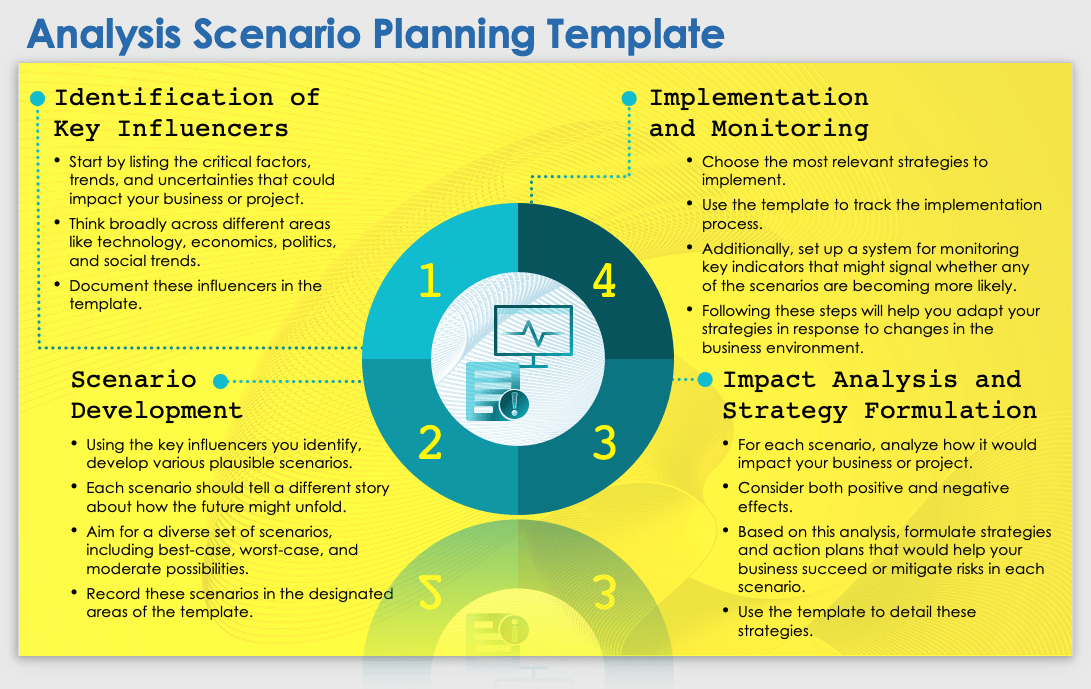
Download the Analysis Scenario Planning Template for
Excel | PowerPoint
When to Use This Template: This analysis scenario planning template is ideal for senior executives and strategic planners when crafting long-term strategies. It is particularly valuable in strategy sessions focused on mapping out the future direction of the business, taking into account diverse potential scenarios that could unfold. Notable Template Features: This template is tailored to facilitate the exploration of scenarios with the potential to affect the business's long-term trajectory. It helps senior decision-makers visualize various scenarios and their impacts to understand the full range of possible outcomes. The layout is structured to encourage comprehensive and forward-thinking strategy development, making it a key asset for high-level strategic planning.
Scenario Analysis XY Axis Template
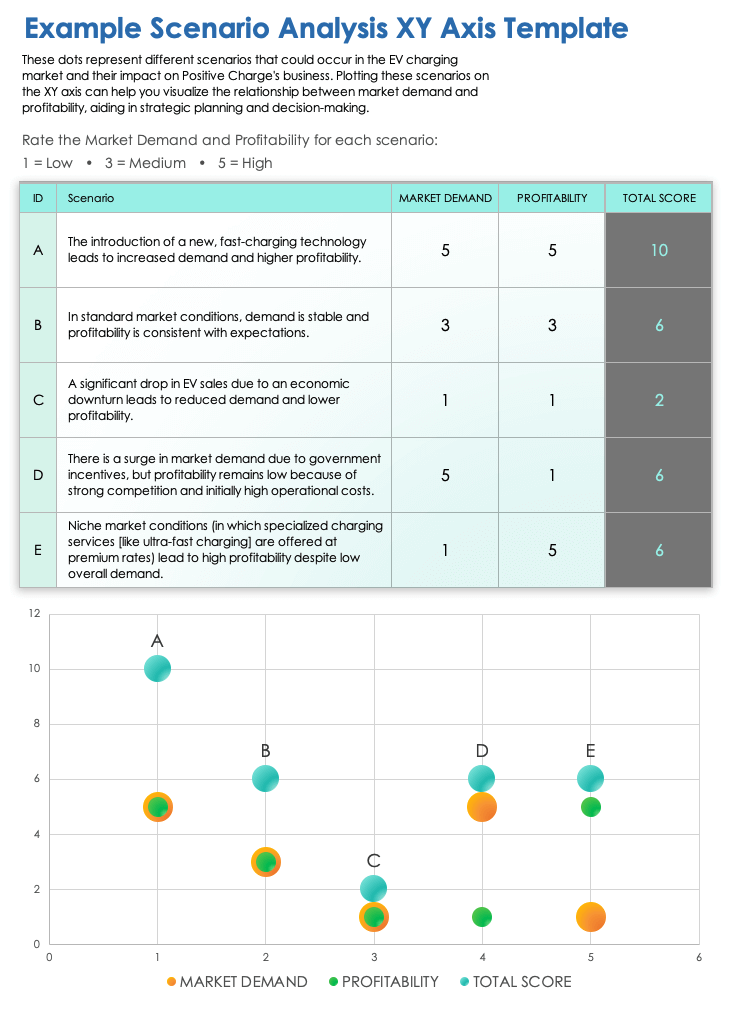
Download a Sample Scenario Analysis XY Axis Template for
Excel | Google Sheets
Download a Blank Scenario Analysis XY Axis Template for
When to Use This Template: Data analysts and strategic planners, in particular, should select this scenario analysis XY axis template for in-depth comparative analysis. This template, with or without sample data, is an effective tool for examining scenarios based on specific, distinct variables, enhancing the depth of strategic insights and risk assessments. Notable Template Features: Characterized by its dual-axis system, this template compares scenarios based on two key variables. Its design offers clear visual representations that aid in understanding complex strategic relationships and risks. The template is especially beneficial for translating sophisticated data into accessible, actionable insights.
Types of Scenario Analysis Templates
The types of scenario analysis templates that businesses use vary, depending on their needs. They include simple templates for quick assessments and specialized templates focusing on financial outcomes, what-if situations, and long-term planning. These tools help businesses make strategic decisions. Here's a breakdown of the different types of scenario analysis templates:
- Simple Scenario Analysis Template: This user-friendly template assists in basic scenario planning, suitable for small-scale or introductory assessments.
- Simple Scenario Analysis Presentation Template: Formulated to effectively communicate and visualize the potential impacts of straightforward future scenarios, this template aids in decision-making and strategic planning discussions.
- What-If Scenario Analysis Template: Focusing on hypothetical situations, this template enables businesses to walk through various possible futures and their impacts.
- Business Analysis Scenario Template: Tailored for comprehensive scenario planning in business contexts, this detailed template incorporates market, competitive, and strategic factors.
- Financial Scenario Analysis Template: An essential tool for financial analysts and CFOs, this template examines how different scenarios impact revenue, costs, and the overall financial health of the business.
- Operational Risk Scenario Analysis Template: This template helps users identify and analyze risks to business operations under various scenarios.
- Scenario Analysis Axis Template: With a two-axis layout to plot and compare different scenarios, this template is often used for visual and comparative analysis.
- Analysis Scenario Planning Template: Designed for long-term strategic planning, this template helps businesses prepare for and adapt to future scenarios.
- Scenario Analysis XY Axis Template: For nuanced comparative analysis, this template plots scenarios according to two distinct variables that might be scaled differently, such as risk versus reward.
Each type of scenario analysis template serves a unique purpose, from straightforward assessments to complex strategic planning, helping businesses prepare for various outcomes.
How to Do a Scenario Analysis
Perform a scenario analysis by developing a range of possible events and using a template to understand their impacts on your business. A scenario analysis template enables you to organize your data, visualize different outcomes, and make rational decisions. Scenario analysis is a strategic planning method used to make flexible long-term plans. Here's how to conduct a scenario analysis:
- Define Objectives Start by clarifying what you want to achieve with the scenario analysis. This could be understanding the impact of a new product launch, market expansion, or changes in the regulatory environment on your business.
- Identify Key Drivers for Change Determine the external forces that could impact your objectives. These might include technological advancements, economic trends, legislative changes, or social dynamics.
- Gather Data Collect relevant data on each key driver. This includes historical data, current trends, and expert forecasts. The quality of your scenario analysis depends significantly on the accuracy and relevancy of the data you use.
- Develop Scenarios Using the identified drivers, construct a range of plausible future scenarios. Typically, you should create at least three: one positive (optimistic), one negative (pessimistic), and one neutral (most likely) scenario.
Use a Template to Capture Your Findings Use a template, such as this article’s simple scenario analysis spreadsheet template to structure your findings. A template helps you organize your scenarios, drivers, and data into a clear format that enables you to visualize different outcomes. It can display key metrics on an easy-to-read dashboard to help with your analysis.

Enter Your Data In the template’s Scenario Analysis Data Table , enter your data and select the corresponding scenario condition from the drop-down menu to populate the charts in the Scenario Analysis Dashboard section.
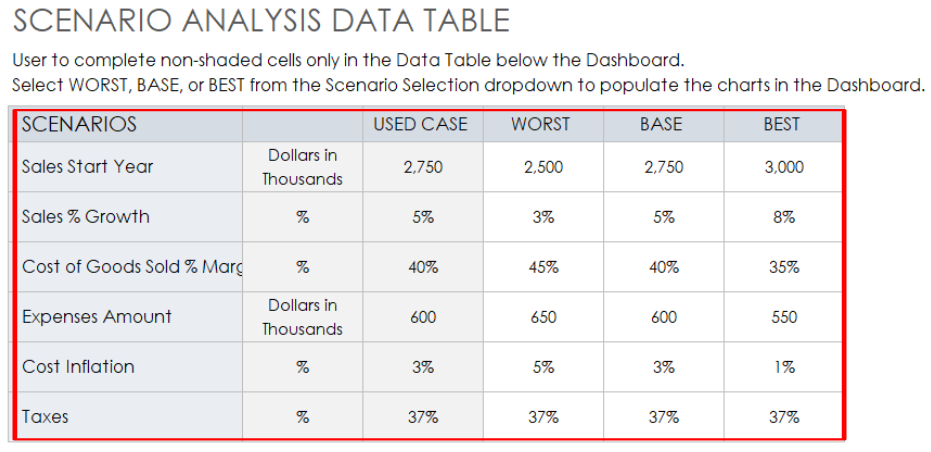
Analyze Impacts For each scenario, evaluate the potential impacts on your business by checking the Calculations section of the template. Consider how each scenario could affect your strategic objectives, operations, financial performance, and competitive position.
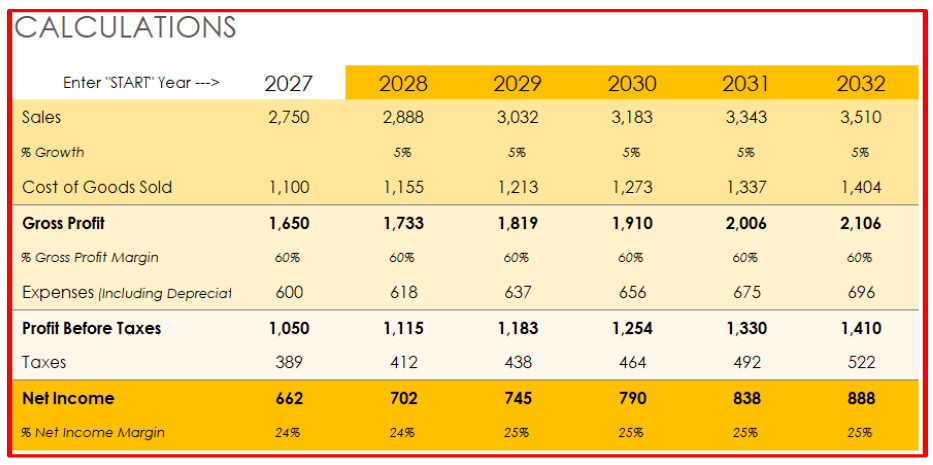
- Develop Strategies and Contingency Plans Based on the analysis, devise strategies that would succeed across multiple scenarios. Prepare contingency plans for specific scenarios to mitigate risks or capitalize on opportunities.
- Monitor and Update Scenario analysis is not a one-time activity. Regularly monitor the external environment for signs that a particular scenario might be unfolding. Update your scenarios and plans as necessary to remain aligned with the changing landscape.
By following these steps and utilizing a structured template, you can perform a comprehensive scenario analysis that helps your business navigate uncertainties with greater confidence and strategic agility.
Strengthen Your Long-Term Planning and Strategic Foresight with Smartsheet
Empower your people to go above and beyond with a flexible platform designed to match the needs of your team — and adapt as those needs change.
The Smartsheet platform makes it easy to plan, capture, manage, and report on work from anywhere, helping your team be more effective and get more done. Report on key metrics and get real-time visibility into work as it happens with roll-up reports, dashboards, and automated workflows built to keep your team connected and informed.
When teams have clarity into the work getting done, there’s no telling how much more they can accomplish in the same amount of time. Try Smartsheet for free, today.
Discover a better way to streamline workflows and eliminate silos for good.

Impact of the use of cannabis as a medicine in pregnancy, on the unborn child: a systematic review and meta-analysis protocol
- Find this author on Google Scholar
- Find this author on PubMed
- Search for this author on this site
- For correspondence: [email protected]
- Info/History
- Preview PDF
Introduction The use of cannabis for medicinal purposes is on the rise. As more people place their trust in the safety of prescribed alternative plant-based medicine and find it easily accessible, there is a growing concern that pregnant women may be increasingly using cannabis for medicinal purposes to manage their pregnancy symptoms and other health conditions. The aim of this review is to investigate the use of cannabis for medicinal purposes during pregnancy, describe the characteristics of the demographic population, and to measure the impact on the unborn child and up to twelve months postpartum.
Methods and analyses Research on pregnant women who use cannabis for medicinal purposes only and infants up to one year after birth who experienced in utero exposure to cannabis for medicinal purposes will be included in this review. Reviews, randomised controlled trials, case–control, cross-sectional and cohort studies, that have been peer reviewed and published between 1996 and April 2024 as a primary research paper that investigates prenatal use of cannabis for medicinal purposes on foetal, perinatal, and neonatal outcomes, will be selected for review. Excluding cover editorials, letters, commentaries, protocols, conference papers and book chapters. Effects of illicit drugs use, alcohol misuse and nicotine exposure on neonate outcome will be controlled by excluding studies reporting on the concomitant use of such substances with cannabis for medicinal purposes during pregnancy. All titles and abstracts will be reviewed independently and in duplicate by at least two researchers. Records will be excluded based on title and abstract screening as well as publication type. Where initial disagreement exists between reviewers regarding the inclusion of a study, team members will review disputed articles’ status until consensus is gained. Selected studies will then be assessed by at least two independent researchers for risk bias assessment using validated tools. Data will be extracted and analysed following a systematic review and meta-analysis methodology. The statistical analysis will combine three or more outcomes that are reported in a consistent manner. The systematic review and meta-analysis will follow the PRISMA guidelines to facilitate transparent reporting [ 1 ].
Competing Interest Statement
The authors have declared no competing interest.
Funding Statement
This study did not receive any funding.
Author Declarations
I confirm all relevant ethical guidelines have been followed, and any necessary IRB and/or ethics committee approvals have been obtained.
The details of the IRB/oversight body that provided approval or exemption for the research described are given below:
The study will use ONLY openly available human data from studies published in biomedical and scientific journals.
I confirm that all necessary patient/participant consent has been obtained and the appropriate institutional forms have been archived, and that any patient/participant/sample identifiers included were not known to anyone (e.g., hospital staff, patients or participants themselves) outside the research group so cannot be used to identify individuals.
I understand that all clinical trials and any other prospective interventional studies must be registered with an ICMJE-approved registry, such as ClinicalTrials.gov. I confirm that any such study reported in the manuscript has been registered and the trial registration ID is provided (note: if posting a prospective study registered retrospectively, please provide a statement in the trial ID field explaining why the study was not registered in advance).
I have followed all appropriate research reporting guidelines, such as any relevant EQUATOR Network research reporting checklist(s) and other pertinent material, if applicable.
Data Availability
All data produced in the present work are contained in the manuscript.
View the discussion thread.
Thank you for your interest in spreading the word about medRxiv.
NOTE: Your email address is requested solely to identify you as the sender of this article.

Citation Manager Formats
- EndNote (tagged)
- EndNote 8 (xml)
- RefWorks Tagged
- Ref Manager
- Tweet Widget
- Facebook Like
- Google Plus One
Subject Area
- Primary Care Research
- Addiction Medicine (324)
- Allergy and Immunology (628)
- Anesthesia (165)
- Cardiovascular Medicine (2377)
- Dentistry and Oral Medicine (289)
- Dermatology (207)
- Emergency Medicine (379)
- Endocrinology (including Diabetes Mellitus and Metabolic Disease) (837)
- Epidemiology (11775)
- Forensic Medicine (10)
- Gastroenterology (703)
- Genetic and Genomic Medicine (3744)
- Geriatric Medicine (350)
- Health Economics (634)
- Health Informatics (2399)
- Health Policy (933)
- Health Systems and Quality Improvement (898)
- Hematology (341)
- HIV/AIDS (782)
- Infectious Diseases (except HIV/AIDS) (13318)
- Intensive Care and Critical Care Medicine (767)
- Medical Education (365)
- Medical Ethics (105)
- Nephrology (398)
- Neurology (3507)
- Nursing (198)
- Nutrition (526)
- Obstetrics and Gynecology (674)
- Occupational and Environmental Health (664)
- Oncology (1824)
- Ophthalmology (538)
- Orthopedics (219)
- Otolaryngology (287)
- Pain Medicine (233)
- Palliative Medicine (66)
- Pathology (446)
- Pediatrics (1035)
- Pharmacology and Therapeutics (426)
- Primary Care Research (420)
- Psychiatry and Clinical Psychology (3178)
- Public and Global Health (6145)
- Radiology and Imaging (1280)
- Rehabilitation Medicine and Physical Therapy (747)
- Respiratory Medicine (828)
- Rheumatology (379)
- Sexual and Reproductive Health (372)
- Sports Medicine (323)
- Surgery (402)
- Toxicology (50)
- Transplantation (172)
- Urology (146)

COMMENTS
Step 1: Decide on Your Stance. Before diving into writing, it's crucial to establish your stance on the topic. Let's say you're going to write an analytical essay example about the benefits and drawbacks of remote work. Before you start writing, you need to decide what your opinion or viewpoint is on this topic.
Table of contents. Step 1: Reading the text and identifying literary devices. Step 2: Coming up with a thesis. Step 3: Writing a title and introduction. Step 4: Writing the body of the essay. Step 5: Writing a conclusion. Other interesting articles.
Revised on July 23, 2023. An essay outline is a way of planning the structure of your essay before you start writing. It involves writing quick summary sentences or phrases for every point you will cover in each paragraph, giving you a picture of how your argument will unfold. You'll sometimes be asked to submit an essay outline as a separate ...
When you write an essay for a course you are taking, you are being asked not only to create a product (the essay) but, more importantly, to go through a process of thinking more deeply about a question or problem related to the course. By writing about a source or collection of sources, you will have the chance to wrestle with some of the
An analytical essay introduction is the first section of the essay that sets the stage for analysis. The purpose of writing an essay introduction is to attract the readers and motivate them to read the essay. The introduction lays the whole groundwork for your essay. So the more substantial the introduction is, the more effective the paper is ...
When writing an analytical essay, start by formulating a thesis statement that includes the topic and the main goal of your text. It will help you create an analytical essay outline and show your readers what you will discuss in your analysis essay. Add it to the last paragraph of your analytical essay introduction.
An analytical essay is a type of essay that involves looking at a subject of interest and explaining what it is saying. Whatever topic you choose, your writing better dissect, dissect, dissect.
How to Write an Analytical Essay in 7 Simple Steps. Written by MasterClass. Last updated: Jun 7, 2021 • 3 min read. Analytical essays provide a way to share your insights about a work of literature, scientific study, or historical event. Analytical essays provide a way to share your insights about a work of literature, scientific study, or ...
The analysis paper uses evidence to support the argument, such as excerpts from the piece of writing. All analytical papers include a thesis, analysis of the topic, and evidence to support that analysis. When developing an analytical essay outline and writing your essay, follow these five steps: #1: Choose a topic. #2: Write your thesis.
The basic structure of an essay always consists of an introduction, a body, and a conclusion. But for many students, the most difficult part of structuring an essay is deciding how to organize information within the body. This article provides useful templates and tips to help you outline your essay, make decisions about your structure, and ...
Analytical Essay Example Title: "Analyzing Orwell's Warning: Themes of Control and Surveillance in '1984'". Analytical Essay Example Introduction: In George Orwell's dystopian novel "1984," the author paints a bleak picture of a totalitarian society where the government exerts complete control over its citizens' lives (Hook).
A typical analytical essay features the usual essay structure. A 500-word essay should consist of a one-paragraph introduction, a three-paragraph body, and a one-paragraph conclusion. Find below a great analytical essay outline sample. Feel free to use it as an example when doing your own work! Analysis Essay: Introduction
Rhetorical Analysis Essay Example. A rhetorical analysis essay is a type that is based on logic and facts. This essay examines how the author drafted a document and what persuasive techniques were used to convince the audience. Take a look at this exemplary rhetorical analysis PDF sample!
Offer some more specific background information (as needed). 3. Provide the title of the piece and the author's name if the essay is about a specific book/poem/article/passage. C. Thesis Statement 1. State your topic and position. Remember that a thesis = claim + reasons. 2. Outline your main points and ideas.
your essay. Introduction Summary The • • Analysis Conclusion Remember critical analysis should be fun! This is your chance to say what you think about a piece, but you must back up your opinions with supporting arguments and specific details from the text. • state the title of the work, the author's name and the date of publication
3. Body: The body of your paper should logically and fully develop and support your thesis. a. Each body paragraph should focus on one main idea that supports your thesis statement. b. These paragraphs include: i. A topic sentence - a topic sentence states the main point of a paragraph: it serves as a mini-thesis for the paragraph.
Create an Effective Outline Using an Essay Outline Template. Creating an essay outline is a crucial step in the writing process that should not be overlooked. Whether it's an argumentative essay outline, a literary analysis essay outline, or a persuasive essay outline, an essay outline template can help you to structure and organize your ...
Rhetorical analysis essays. This type of essay is basically based on facts and logic. Examples of these are essays regarding the fundamentals of physics and geometry. Process analysis essays. This essay is used to describe and examine a certain process and its dynamics. It is required to explain the transitions and progress in a certain process ...
Below are some of the types of analysis essays that you can dwell on: Poetry analysis essay. In dealing with this type of essay, the writer must focus on the poem's content and structure. The objective of the writer is to foreground the genuine message and significance of the poem. Character analysis essay. The focus of this type of essay is ...
Revised on July 23, 2023. A rhetorical analysis is a type of essay that looks at a text in terms of rhetoric. This means it is less concerned with what the author is saying than with how they say it: their goals, techniques, and appeals to the audience. A rhetorical analysis is structured similarly to other essays: an introduction presenting ...
Critical analysis template. Use the templates as a guide to help you hone your ability to critique texts perfectly. Click on the following links, which will open in a new window. Critical analysis template.
How to Write a Critical Analysis Essay. Written by MasterClass. Last updated: Jun 7, 2021 • 3 min read. Critical analysis essays can be a daunting form of academic writing, but crafting a good critical analysis paper can be straightforward if you have the right approach.
For more report examples you can learn from, check out our guide on Report Examples With Sample Templates. The Ultimate Report Writing Format. Now we're getting to the good part — the ultimate report writing format. While this may vary based on the data and information you pull, it provides enough leeway for you to follow standard report formats.
Art analysis essays provide insight into interpreting and critiquing artistic works. These examples help students understand the deeper meanings in art and the techniques artists use to express their messages. ... Dance Me Outside (1994) Movie Review Essay Sample, Example. 3 min read. Nov 24 2018. The Cringiest Movie Moments Essay Sample ...
What-If Scenario Analysis Template: Focusing on hypothetical situations, this template enables businesses to walk through various possible futures and their impacts. Business Analysis Scenario Template: Tailored for comprehensive scenario planning in business contexts, this detailed template incorporates market, competitive, and strategic factors.
Abstract. Introduction: The use of cannabis for medicinal purposes is on the rise. As more people place their trust in the safety of prescribed alternative plant-based medicine and find it easily accessible, there is a growing concern that pregnant women may be increasingly using cannabis for medicinal purposes to manage their pregnancy symptoms and other health conditions.